INSIGHTS



All the projects presented in this magazine have been supported by the French government through the France 2030 investment plan managed by the National Research Agency (ANR), as part of the Initiative of Excellence Université Côte d’Azur under reference number ANR-15-IDEX-01.

In this first issue of Insights, the magazine of Université Côte d’Azur’s Initiative of Excellence (IdEx), we highlight people and places that showcase our university’s research excellence, and give an overview of IdEx initiatives in international development, education and innovation. The special feature in this issue is devoted to research in seismology from the perspective of risk and resilience, one of our signature themes. We also wanted to present an attractive publication that can be collected or offered as a gift, while striving to minimize its environmental impact as part of our overall eco-responsible approach. This is a major focus area for Université Côte d’Azur, which has recently been rewarded for its efforts to promote a sustainable society by being included in the Times Higher Education (THE) international impact rankings. Université Côte d’Azur’s Digital Production Center is actively committed to responsible printing and is working to find materials and inks that are as cost-efficient and environmentally friendly as possible. This is part of our continuing endeavors to achieve our goals.
Sylvain ANTONIOTTI, Initiative of Excellence (IdEx) Vice President


Spotlight on the Academies of Excellence

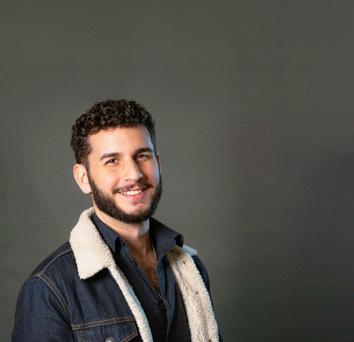

Publisher: Université Côte d’Azur, 28 av. de Valrose 06000 Nice
Legal representative: Jeanick BRISSWALTER, President, Université Côte d’Azur
Publication Director: Sylvain ANTONIOTTI, Vice-President, Initiative of Excellence (IdEx) Université Côte d’Azur
Editorial Committee:


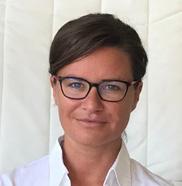

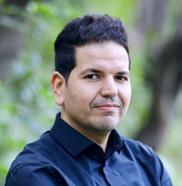
Contributors: Academies of Excellence, Université Côte d’Azur scientific community
Coordination: Céline PACCOUD, Communications Manager “Major Projects”, Head of Communications & Branding
Design: Jeremiah TURRINI, Graphic designer, Head of Communications & Branding
Printing: University Digital Production Center
Publication date: June 2024
ISSN in progress
The Pitch Challenge, a dynamic section covering the careers and/or projects of inspiring figures who belong or have belonged to the Université Côte d’Azur community.
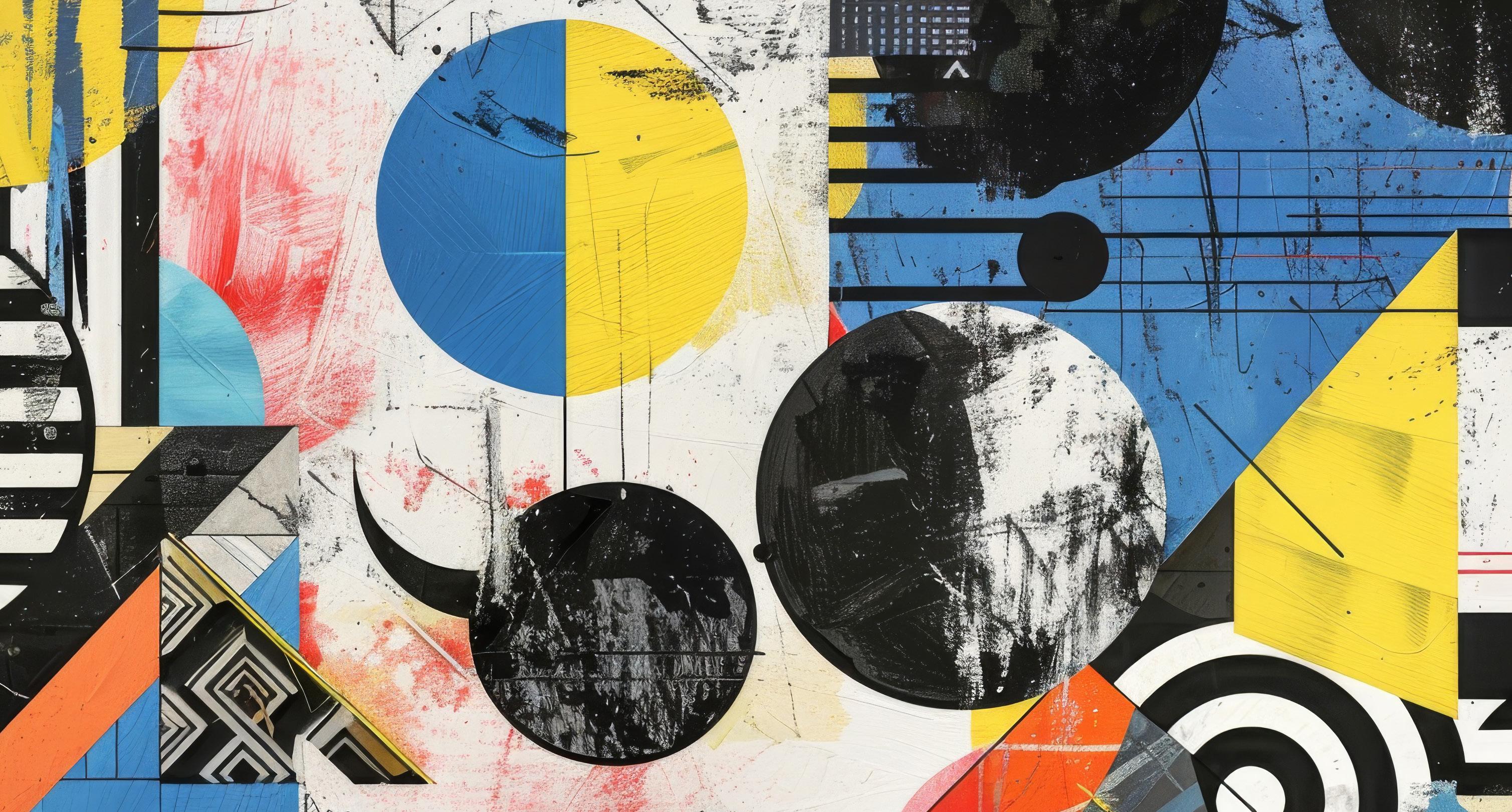
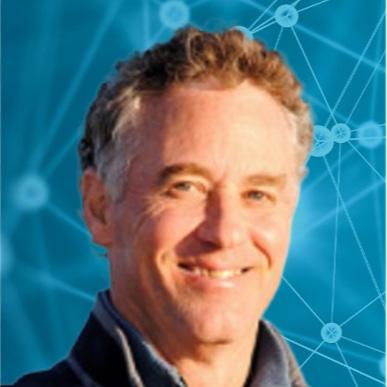
Pr. Dennis FOX
Dennis Fox is Professor of Geography, member of the ESPACE Laboratory and Director of the MSc program Environmental Hazards and Risks Management. He is a Canadian-born specialist in global environmental risks and land degradation.
«Natural hazards and ecological crises are in the news every day, in every part of the world. It is estimated that natural disasters will be responsible for almost 100,000 deaths and $500 billion in economic losses worldwide in 2023, not to mention the millions of people injured, displaced or impacted. In addition to their direct and indirect impact on human populations, extreme events exacerbate the pressure on ecosystems, many of which are already in a state of ecological crisis. The unprecedented wildfires that ravaged Australia in 2019-2020 killed or displaced more than 3 billion animals, highlighting the scale of the challenges we face, particularly in a country where the balance of ecosystems is undermined by invasive species. Climate change is expected to continue to accentuate weather variations and thus worsen the intensity of events.
Climate change is clearly one of the major challenges of our time, but less obviously, changes in land use are also causing issues of a similar magnitude. It took homo sapiens tens of thousands of years to reach a population of approximately 1 billion around the year 1800, and only two hundred years to reach about 8 billion today. This rapid exponential growth is continuing, generating changes in land use that have already transformed about one third of the planet in just six decades. On a global scale, these trends take a number of typical forms: the permanent loss of agricultural land through artificialization, tropical/equatorial deforestation, and urban growth. By 2050, the urban population worldwide is expected to grow by more than 2.5 billion people. Furthermore, cities are expanding more rapidly in regions where planning and land management are the least developed.
The MSc Environmental Hazards and Risks Management supported by IdEx in conjunction with the Academy of Excellence Space, Environment, Risks and Resilience offers students a unique opportunity to contribute to the preservation of our planet in a world facing unprecedented challenges, and to become involved in better management of our planet in the face of the rapid transformations it is undergoing. This international, transversal program is taught entirely in English, and has already attracted some thirty nationalities since it began. The MSc has three unique features compared with other national and international academic programs in the field of natural hazards.
Firstly, it covers a wide range of risks: earthquakes & tsunamis, floods, forest fires, land-use change, landslides, and so on, with complementary interdisciplinary modules on topics such as climate change and crisis management, to provide students with a transversal general knowledge of risk management. Secondly, the modular teaching approach is strongly based on projects and case studies. After a one-semester general leveling course, risks are covered sequentially on a full-
time basis. Finally, this international program relies heavily on IT tools such as Geographic Information Systems (GIS), remote sensing and programming (Python & R). The exponential growth in the availability and quality of georeferenced data means that we need to find optimal ways of managing the influx of massive data. For example, the IGN BD-TOPO database contains 3D data on over 50 million buildings throughout France. In addition, Météo France’s climate database, which has been available online free of charge since January 2024, contains more than 2 million lines for a single department over one decade. Thanks to its aerospace industry and investments, France probably has more high-quality geographic data than any other country in the world. Finally, the Sud-PACA region is particularly well-suited to the study of risks. Beyond its attractiveness and international reputation, few regions in Europe present such a variety of natural hazards on their territory. It is therefore an open-air laboratory, set in a robust ecosystem, where there is never a shortage of examples for training the next generation of talented researchers.»
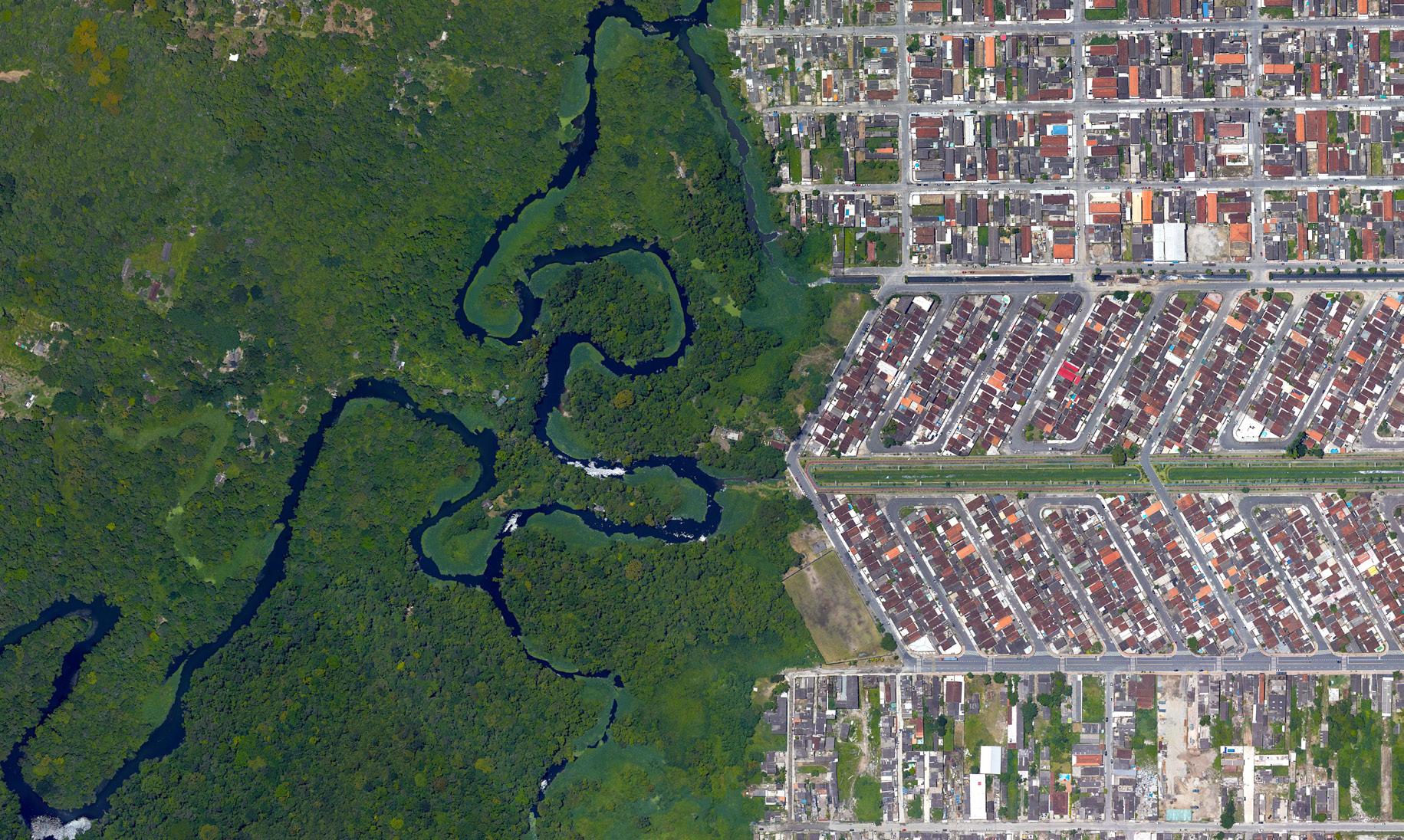
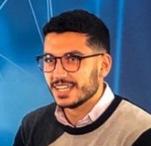
Delve into the inspiring story of Elias Boughosn, a Université Côte d’Azur alumnus, graduate of the MSc program Data Science & Artificial Intelligence (DSAI) developed by IdEx, and now Big Data Engineer at Amadeus. His career is a true success story, displaying perseverance and excellence.
«From my first steps in the world of IT to my current role at Amadeus, my journey has been an exciting one, shaped by the skills acquired during my experience in the Data Science & Artificial Intelligence (DSAI) program.
After I obtained my bachelor’s degree in computer science in Lebanon, the DSAI program was an ideal opportunity for me, because it merged theory and practice in an educational package combining computer science, statistics and mathematics. Rising up to this personal challenge, I was quickly immersed in the art of data processing and designing machine learning models to solve real-life challenges. What really sets the MSc DSAI apart from other programs is the opportunity it offers to put theoretical knowledge into practice through research projects and internships. My experience as an intern at Amadeus was a revelation. I was working with top experts who showed me how to apply the knowledge and skills I had acquired in class to real-life business challenges.
The job offer I received from Amadeus even before graduating from the DSAI program was the culmination of an intense and rewarding journey that had prepared me perfectly for the position of Big Data Engineer. The solid technical foundation and mindset forged during my studies in this MSc have been invaluable allies and have given me the confidence to juggle search algorithm optimization and advanced customer data analysis with ease. Looking back, I am very grateful to my MSc teachers and the unwavering support of the administrative team, who gave me the skills and confidence to succeed in my career as a big data engineer. I would like to express my gratitude by

supporting future students and alumni if I get the chance.
As I continue to evolve in my role at Amadeus, I am excited about the opportunities that lie ahead. The skills I have acquired through the MSc DSAI program have opened up a world of possibilities for me, and I can’t wait to find out what the future holds.»
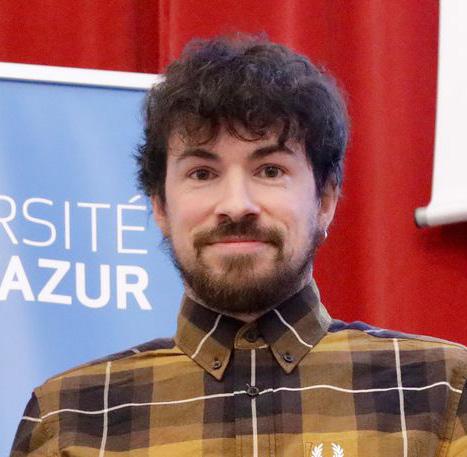
Dr. Romain FILHOL
Romain Filhol, PhD in geography, Université Paris Est - PhD in social research, Università degli Studi di Napoli Federico II - Postdoctoral fellow at URMIS, Université de Côte d’Azur
My interest in the relationship between work, migration and agri-food chains began in the Bulgarian village of Padina, where I conducted my first research fieldwork in 2010. Inspired by the stories my grandparents told me of the central role played by the vegetable garden in the family economy, I wanted to investigate this mountain town characterized by intense farming on a small amount of land. My aim was to understand how this «peasant» agricultural model – studied by Henri Mendras – could survive on the margins of the European Union. After a few weeks of fruitless research, the answer to this question came unexpectedly during spring break. For the first time since my arrival, the village was full of young men and women I had never seen before. It became clear that the agricultural model based on selfsubsistence and the sale of surpluses could survive in Padina because of the seasonal labor migration of Padina’s inhabitants, who chose to leave the town for several months of the year and work in sectors with labor shortages in Western Europe –and particularly in intensive agriculture. What a shock to discover that the survival of an agricultural model that respected the land and its people was closely dependent on another agricultural model, based on the exploitation of resources and labor! With this in mind, I began to focus more closely on the role of migrant agricultural workers. While discovering the work of researchers such as Swanie Potot – who now supervises my work at URMIS – the Rosarno revolt broke out. Hundreds of African orange pickers rose up against the exploitation and violence they were suffering in southern Italy. This event marked the starting point for my research into the role of migrant labor in the
intensive agriculture of the Mezzogiorno region. How can we explain our ongoing need for foreign labor in production areas, while at the same time allowing the segregation and exploitation of this same labor force to continue? Why treat workers inhumanely when we know we need them?
After initial fieldwork on the outskirts of Naples (2011-2012), influenced by the theoretical framework developed by URMIS researchers – notably in the book De l’ouvrier immigré au travailleur sans papiers. Les étrangers dans la modernisation du salariat (From immigrant laborers to undocumented workers. Foreigners in the modernization of the workforce) (Morice, Potot, 2010) – the Université Paris-Est gave me the opportunity to continue exploring these themes as part of a doctoral thesis in geography carried out jointly with the Università degli Studi di Napoli Federico II and supervised by Claire Hancock, Adelina Miranda and Serge Weber (2012-2020). I quickly realized that if I wanted to analyze in detail the importance of migrant labor in intensive agriculture, I would have to focus on a specific sector. I decided to focus on the tomato industry, because of its symbolic importance as well as the extreme exploitation it involves. My aim was to «lift the veil» on what lies behind those familiar metal cans used to cook the most famous dishes of the Italian culinary tradition. Awarded the 2022 University Prize by the Val-de-Marne Departmental Council, my thesis research paved the way for a wider exploration of Italy’s largest fruit and vegetable processing industry, with sales of 4.4 billion euros in 2022. Under a contract funded by IdEx Université Côte d’Azur and with the support of URMIS – which I finally had the
good fortune to join, after drawing inspiration from the work of its members for many years – my current research (2023-2024) sheds light on how migration has shaped and continues to shape the destiny of the tomato can.
I conducted an ethnographic inquiry over several months in tomato processing factories, where I met migrants who were different from those working in the fields, and analyzed the role played by Italian migration in the consumption and distribution of Made in Italy agri-food products. My work is part of the resurgence of studies into the changes in agrifood sectors in the context of globalization. I hope that it will make us all more aware of the conditions under which the food we eat is produced, and make us more grateful, or at least more respectful, for the migrants who help keep our plates full.
The «IdEx Postdoctoral Research Award», was awarded on February 13, 2024, to Romain Filhol and his team for their research work at URMIS (Migration and Society Research Unit) and his presentation entitled «The tomato can: analyzing the trajectory of an object produced by and for migrants.» The prize was presented by Laurent Counillon, Vice-President in charge of Research and Innovation at Université Côte d’Azur and includes €5K research funding.


The Research Program of the Université Côte d’Azur Initiative of Excellence employs a wide range of actions and measures to support research. Here you can find out more about some of the research projects that have been completed or are underway, which are helping to raise the international profile and attractiveness of Université Côte d’Azur.

Adipo-Cible’s mission is to unlock the mysteries of obesity. Since November 2023, the consortium has officially united 17 basic and clinical research teams and one startup around a common goal: to understand adipose tissue malfunctions in people suffering from obesity and to develop personalized management of the disease.
With over a billion people affected worldwide, obesity is now the most widespread chronic disease. The prevalence of obesity has continued its dramatic rise in recent decades, doubling worldwide since 1990 among adults, and quadrupling among adolescents. In France, almost half the population is overweight (47.3%), including 17% that suffer from obesity.
The World Health Organization defines obesity as a complex, multifactorial chronic disease involving excessive adipose tissue deposits that can impair health. People suffering from obesity are at high risk of developing numerous pathologies such
as cardiovascular disease, type 2 diabetes and certain types of cancer, which not only contribute significantly to global morbidity and mortality, but also impose a considerable economic burden. Obesity is associated with more rapid physical decline and frailty, and is therefore becoming a major problem for our aging Western populations.
While therapeutic strategies have recently made progress, the management of obesity remains complex and ineffective, notably due to the multifactorial nature of the disease. Thus, the results of interventions based on diet and/or physical activity remain modest over the long term. It is therefore urgent to determine the physiological factors underlying this disease, at genetic, cellular and molecular levels, in order to stem the rise in cases.
The Adipo-Cible consortium, led by Professors Antonio Iannelli, a bariatric surgeon, and Christian Roux, a rheumatologist at Nice University Hospital,
aims to better understand obesity by taking a multidisciplinary approach. For the first time, AdipoCible has created a real continuum of fundamentaltranslational-clinical research into obesity and its metabolic complications, with three main lines of research. The first is to discover the mechanisms involved in adipose tissue dysfunction, the most fundamental facet of this large-scale project. The second is to search for biomarkers of weight regain after surgery and combine them with new predictive algorithms to develop personalized treatments for each patient, a translational project at the frontier between basic research and clinical application. And the third, is to eventually make it possible to analyze each patient’s data with artificial intelligence to develop innovative, personalized nutritional and physical activity programs and/or surgical and endoscopic interventions to improve efficient and sustained weight loss.
The Adipo-Cible consortium aims to become a major international player in obesity research as well as in the scientific culture surrounding obesity. Many myths continue to stigmatize obese patients by suggesting they are to blame for their illness. AdipoCible will develop promotional tools to disseminate knowledge about adipose tissue, aimed at both students at Université Côte d’Azur and its national, European and international partners, and to the general public. A better understanding of the science behind obesity will help to combat the stigmatization of sufferers, and thus improve their care.

1 Phelps et al., The Lancet 2024, https://doi.org/10.1016/S0140-6736(23)02750-2
2 Fontbonne et al., J Clin Med 2023, https://doi.org/10.3390/jcm12030925
3 Obésité et surpoids, OMS 2024, https://t.ly/aPdXz.
4 Westbury et al., Curr Obes Rep 2023, https://doi.org/10.1007/s13679-023-00495-3

With the exception of the sun, the stars appear in our sky as tiny dots and, to our great disappointment, not even a telescope can allow us to see their surface. For centuries, astronomers have examined the luminosity, color and position of stars, without ever seeing their shape! It is only in the last ten years or so that the first images of the largest and nearest stars have been revealed – and they show that stars are not spherical! The images are still low resolution, however, and distinguishing fine details would require telescopes with much larger diameters, typically a few hundred meters, which seem difficult if not impossible to build.
An alternative is to use a technique called interferometry, in which a set of «small» independent telescopes work together to form the equivalent of a giant virtual telescope. For this technique to work, however, the optical signals from different pairs of telescopes need to be correlated. This operation is particularly difficult at optical wavelengths for two reasons: the electric field is too fast and too weak to be recorded directly by electronic systems, and it is extremely complicated to transport the light over long distances without altering important properties.
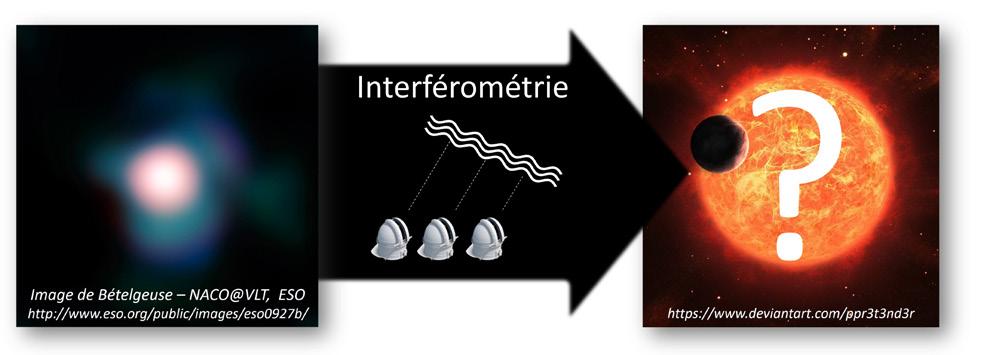
To overcome these limitations, we are working at the Nice Institute of Physics (INPHYNI) on ultra-fast detection methods combining short-pulse lasers and the latest generation of photonic components for telecommunications. The aim of Félix Gudin’s thesis, funded by IdEx Université Côte d’Azur, is to indirectly digitize the stellar optical electric field and overcome the challenge of transporting the light using photonics methods, or rather, in this context, astrophotonics methods!

Nicolas Forget, Research Director, Nice Institute of Physics
Félix Gudin, Doctoral student, Nice Institute of Physics

The English modal verbs can, could, may, might, should, would, and so on, are used to express, among other things, certainty, probability, regret or to ask permission to do something. Frenchspeakers learning English find them difficult to master for several reasons. Firstly, they all have several meanings. For example, may can express a probability (e.g., it may already be too late) or it can be used to ask permission to do something (e.g., May I borrow these books?). Secondly, many modals have the same meaning, but with subtle differences. For example, may and might express probability but to varying degrees. Could is the past tense of can in the sense of being able to do something (e.g., when I was younger, I could
run for hours), but it also expresses a degree of probability (e.g., this could be done quickly).
In other words, the polysemy of modals makes it difficult for teachers to present them clearly and completely. Since it is natural to want to express desires, regrets and emotions, and to imagine how things could, should or would have been, it is important to learn modal verbs when learning English. These present a particular difficulty for French-speaking students because French uses different tenses and modes rather than modal verbs. Thus, the past tense in elle a dû partir plus tôt (she had to leave earlier) has a completely different meaning to the past conditional in elle aurait dû
partir plus tôt (she should have left earlier) and they correspond to two different English modals.
This raises the question of what is the best way to teach English modality to French-speaking university students. This project tests the effectiveness of a traditional approach and one derived from cognitive linguistics. The traditional approach is to present the speech functions of modals individually, then to give learners exercises where they use them in isolated sentences with no context. For example, after explaining that may is used to ask permission to do something, students are asked to rewrite sentences using a modal verb (e.g., Do you mind if I sit here? –> May I sit here?).
The didactic approach derived from cognitive linguistics is based on experimental studies which show that when students take part in fun activities set in a relevant cultural context, they learn more effectively than with traditional teaching. For example, we could ask students to listen to a contemporary song and read the written lyrics in which the modals have been removed. Once they have identified the modals, we could discuss the lyrics, explaining the meanings of the modals, then ask them to rewrite the song, suggesting other modals and discussing how this would this change the song’s lyrics.
The students involved in this project are attending a grammar and translation course. The grammar section teaches modals, while the translation section uses a variety of real texts translated to and from French to study the use of modals in context. Students’ progress is monitored by means of test translations and essays, as well as experimental


tasks presented as grammar tests at the beginning, middle and end of the semester. Written work and online grammar exercises count towards their continuous assessment grades.
The results of this project will help improve the way English and other languages are taught at Université Côte d’Azur, and thus enhance students’ language skills. They will also be disseminated at university conferences and in articles in applied linguistics journals.
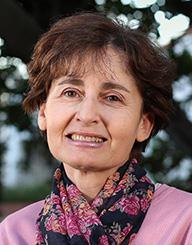
Dalila
Ayoun,
Professor of French Linguistics
Deciphering the neural code of movement to understand, optimize and restore motor function (NEURON)
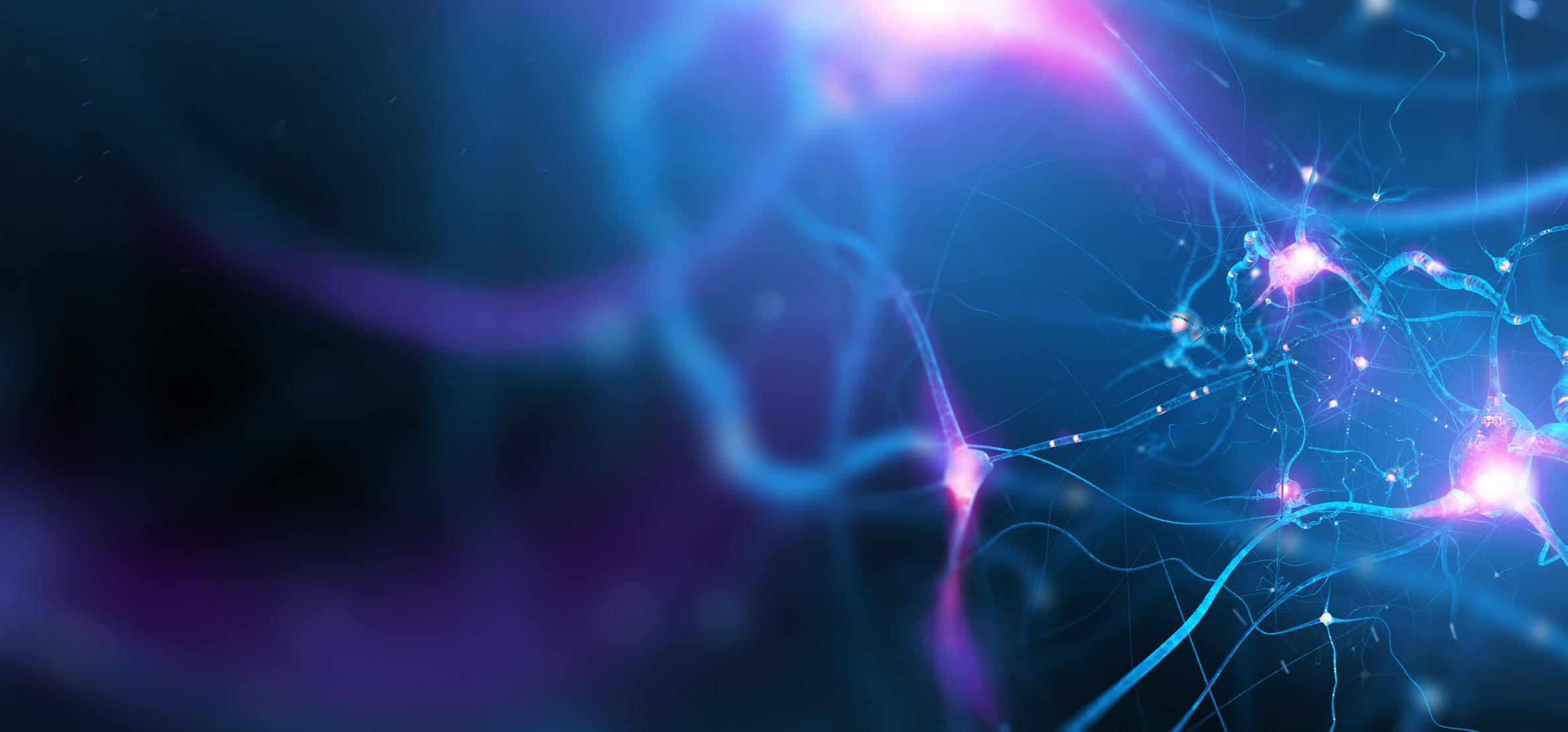
Movement plays an essential role in many vital functions and allows us to interact with our environment. However, understanding how motion is produced remains a challenge for many scientific fields. The originality of this project lies in changing the scale at which we observe and interpret the control of movement, that is, at the level of motor neurons and not muscles.
Our brain controls most of our movements by sending nerve signals in the form of electrical impulses to our muscles. These nerve signals are transmitted via motor neurons (or motoneurons) which connect the spinal cord to the muscle fibers. Recent advances have made it possible to decode the electrical activity of a muscle, measured by a technique called electromyography (EMG), using artificial intelligence algorithms. The measured signals can be deconstructed to isolate the activity of particular motor neurons, providing information on the nerve signal transmitted via the spinal cord. The spinal motor neuron is the only neuron in the human body whose electrical activity can be measured non-invasively, that is, without penetrating the skin. This information could
previously only be obtained using electrodes implanted in muscles or nerves.
This approach will help us better understand how nerve signals are distributed to motor neurons to produce movement. In particular, we will test the hypothesis that these commands are distributed to functional, rather than anatomical, groups of motor neurons. Beyond this basic research, we will use our approach to assess (and understand) motor deficits in patients with nervous system lesions. Ultimately, this approach will make it possible to develop innovative human-machine neural interfaces.

Jean Carlo Yunén Aróstegui, a graduate of the University of California, Los Angeles (UCLA) in theater directing, is a Dominican director and artist of Spanish and Lebanese origin. He began his artistic career at the age of fifteen with a photo exhibition in Santo Domingo. Drawn to stories where humanity and ideology clash, he uses humor to explore human truths.
He is interested in cultural narratives and has worked on several productions using new storytelling technologies, including augmented and virtual reality. His social engagement is demonstrated by his roles as Associate Artistic Producer for In The Margin, a coalition of multidisciplinary queer, trans, indigenous, black and people of color (PQTANDC) artists, and as coordinator of the Queer Theatre Alliance.
How does Université Côte d’Azur attract an artist like Jean Carlo Yunén Aróstegui ?
In 2022, under the impetus of its current director, Professor Jean-François Trubert, a new IdEx Reference Center dedicated to extended reality was created: the eXtended Reality Research and Creative Center (XR²C²). It brings together the multidisciplinary activities of 13 Université Côte d’Azur laboratories with specific technical capabilities and expertise in the field of extended reality. Its aim is to become a major center for regional initiatives linked to immersive environments in fields such as artistic creation, media studies, health, and information and communication sciences and technologies. The center, on the Georges Méliès Campus in Cannes, provides a technology platform together with skills and knowledge for professionals from industry, education and research. XR²C² thus lies at the intersection between immersive environments and a variety of fields, and facilitates the emergence of new innovations in extended reality (XR) in an interdisciplinary and cross-sectoral way.
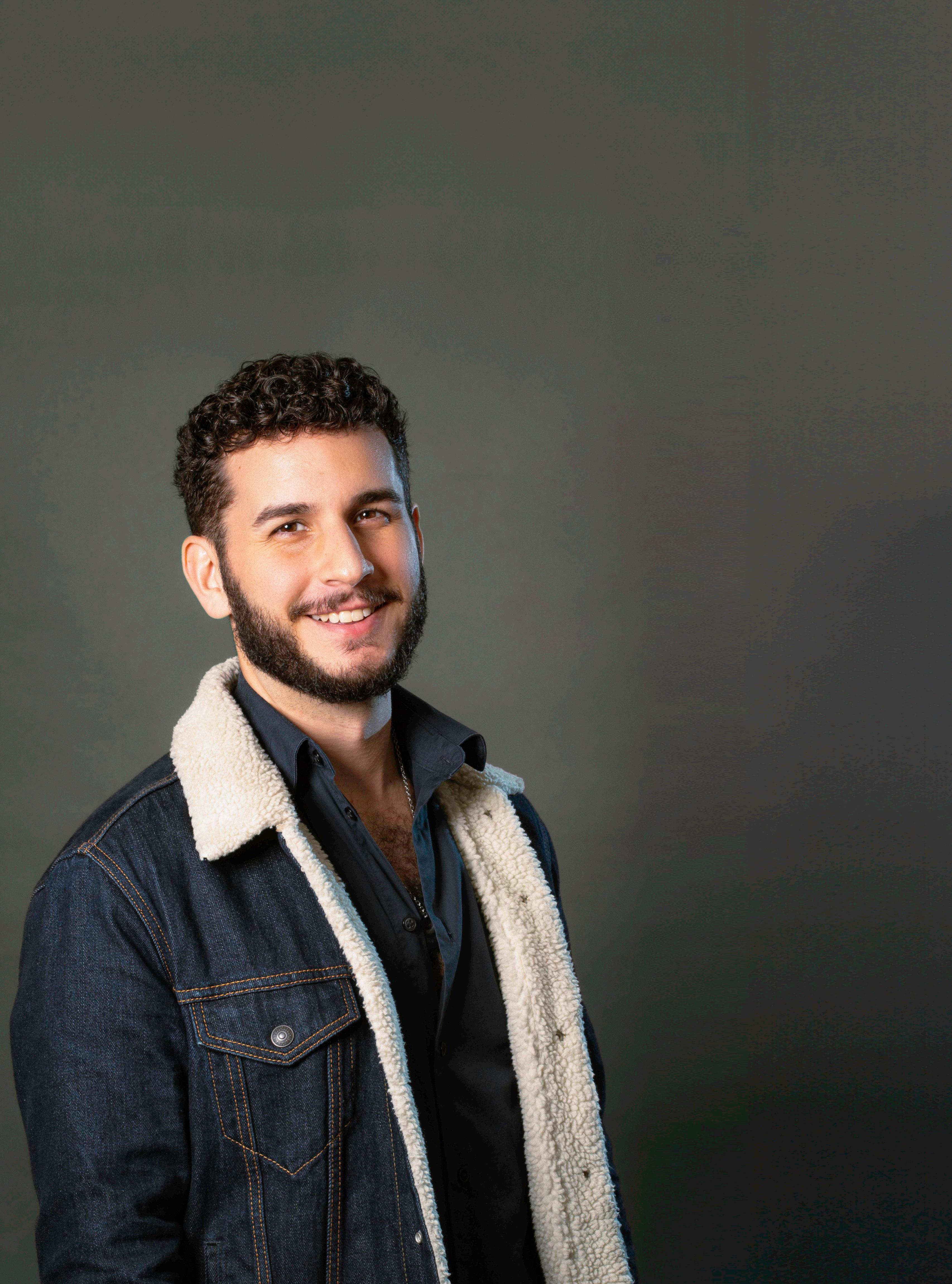
In this context, the XR²C² team lost no time in developing a program of artistic residencies to allow artists specialized in XR technologies to create a work of art on the Université Côte d’Azur’s Georges Méliès Campus, in collaboration with students and researchers. Artists share their experience and creative process, highlighting the use of XR devices. A final event is organized at the end of the residency to present the results of the work.
Jean Carlo was the first recipient of an XR²C² residency.
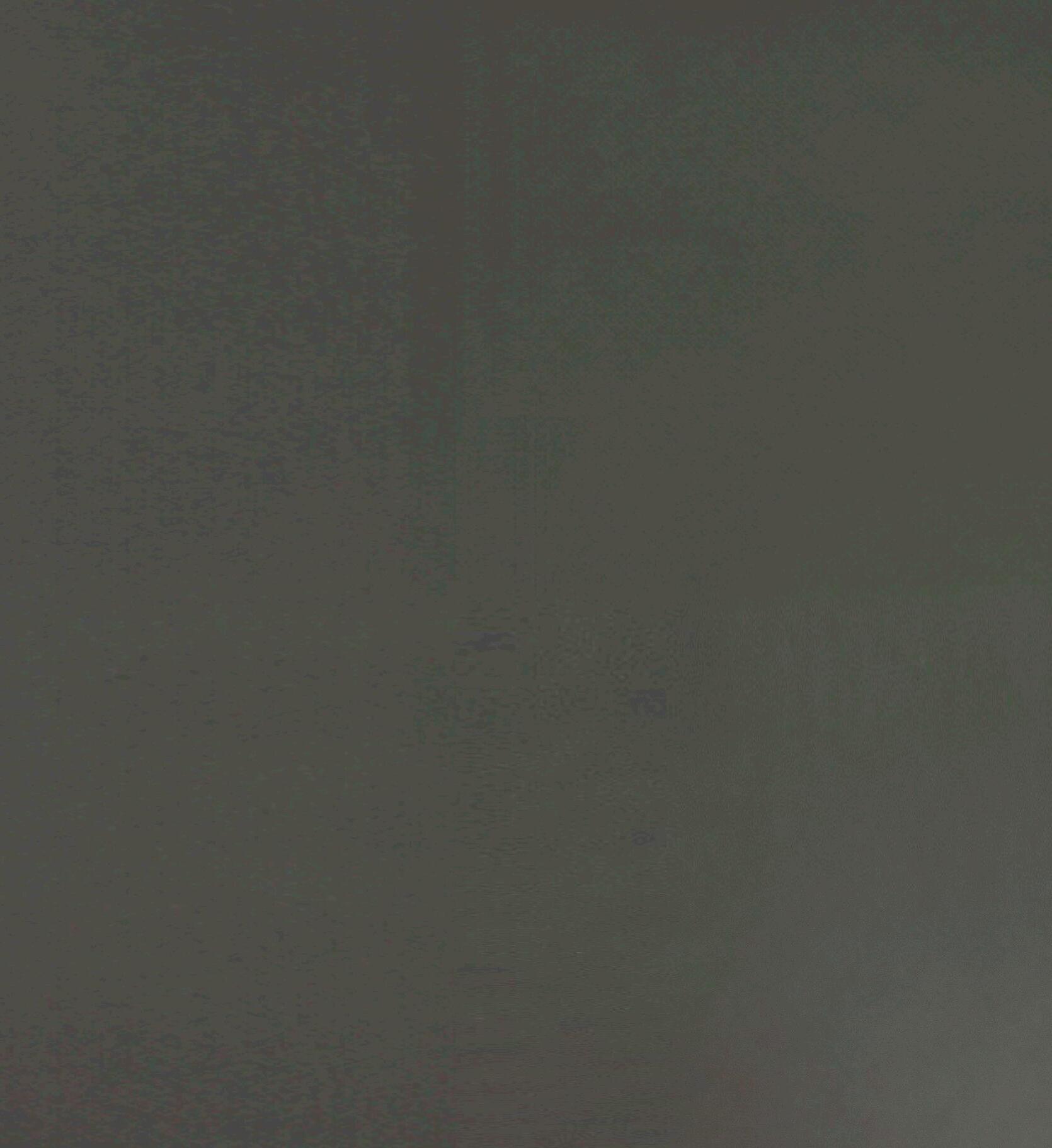
How did you hear about Université Côte d’Azur’s XR²C² residency?
UCLA Professor Jeff Burke forwarded the call for proposals to me. He had been invited by XR²C² to participate in a study day and has continued to follow the Center’s development ever since. When he heard about this residency, he thought the scheme could support my current work.
What encouraged you to apply for this residency?
I describe myself as a multimedia storyteller with a particular interest in directing theater. My work focuses on the concept of identity and the individual’s relationship with the community as a whole, as we navigate our place in the world.
In this context, I had begun to explore the potential of extended and augmented reality for immersive theater. I was looking to explore this field in greater depth, but there are very few places where it is possible to do so. In this sense, over and above the attractiveness of the grant package, the residency offered by XR²C² represented a quite unique and novel opportunity.
What did you do during your residency?
I was selected on the basis of a project, UNEARTHED, which set out to explore the interactions between technology and the public. In the project, I drew on my own history, with my parents’ migration from Lebanon to the Dominican Republic, and then my own from the Dominican Republic to the United States. I wanted to explore how augmented reality can create bonds within families, through a project truly combining creation and research.
More specifically, my work was based on the following hypotheses and questions: What benefits do we inherit through immigration and what are we entitled to? What can we claim for ourselves, and what is given to us, whether we want it or not? How can we create new patterns from the past?
In terms of creation, my work is based on a combination of live stage performances superimposed with a layer of augmented reality. During the performance, the audience moves around the space to experience different elements through a device.
How would you describe your working environment and the support from the XR2C2 teams?
I received a lot of encouragement from the Center’s management and operational team, and they were very kind. But above all, the exploratory and ambitious nature of the project made it possible to learn together and adjust the working conditions to the needs of the project. The flexibility and adaptability of the teams created an environment conducive to UNEARTHED.
In other words, the approach adopted was one of continuous learning based on research and the pursuit of a focused artistic vision, while remaining
Unhearted, 2022

responsive to the different outcomes encountered throughout the project.
Guided by a set of self-imposed guidelines and objectives, the team has remained flexible in its pursuit of these goals, adjusting them as necessary to align with evolving needs and discoveries.
To what extent has the residency had an impact on your work?
The opportunity it gave me to take time for creative reflection was extremely valuable. I also appreciated the chance to invite some of my team members to join me to strengthen our capabilities together.
In terms of methodology, the residency allowed me to work on ideas while testing their implementation at the same time. This exploratory work resulted in the creation of a first prototype.
Now I need to find a suitable place to install this first prototype and continue its development, which is a challenge for two reasons. Firstly, even today, very few venues have the infrastructure and facilities to match those of XR2C2 on the Georges Méliès Campus. Typically, in the United States, this field is still in its infancy, and still a long way from the
level of what you will find on the Cannes Campus. Secondly, as the project itself is highly innovative, it’s not easy to find a venue that can resonate with it.
What will you remember most about your XR2C2 residency?
It was extremely enriching to delve deep into the cultural and political fusion taking place on the Côte d’Azur. The exploration of identity was a fitting theme in this setting. The region’s avant-garde mindset and the efforts of its artistic community to push the boundaries between art, technology and different media were well-matched to this project.
Ultimately, by integrating augmented reality technologies, it is possible to access a different inner world of memories, bridging the time gap or creating a new time where memories can come to life. So, by infusing technology with emotion, we can go to places that would otherwise be inaccessible, experience the invisible and make the invisible visible through the virtual world. What makes this medium so captivating is its ability to interact with the real world.
In conclusion, apart from the new skills I acquired, what I will take away from this residency is how it gave me the opportunity to experiment beyond the limits.

Unpredictable, destructive and sometimes deadly, earthquakes are dreaded natural disasters. Since the dawn of time, humans have been trying to understand what causes the earth to trem-ble so violently that it occasionally destroys entire cities. The origins of these seismic events, previously attributed to fate or even divine wrath, actually lie beneath our feet, in the heart of the Earth.
The prevailing heat and pressure cause thermal convection in the Earth’s mantle. Like wa-ter in a pan on the stove, the hottest and least dense regions of the mantle tend to rise towards the surface, while the coldest and densest regions sink towards the center of the planet. These internal movements of matter have an impact on the surface, particularly on the tectonic plates, which then move relative to one another by a few millimeters to several centimeters per year. The resulting deformations of the earth’s crust cause stress to build up in the rock in some places. When it reaches breaking point, the accumulated energy is abruptly released by a sudden dis-placement of the ground and the earth shakes.
This rupture causes vibrations, known as seismic waves, which propagate through the rock, generating the tremors felt on the surface. Depending on the strength of the earthquake and the quality of the infrastructure, many human lives can be lost and the consequences for cities can be catastrophic, not to mention the repercussions for the environment. The violent earthquake that struck Haiti on January 12, 2010, was responsible for the deaths of over 250,000 people and at least as many injuries. The capital, Port-auPrince, and some neighboring towns were devastated. Several hundred thousand people found
themselves homeless overnight. In addition to the initial shock and associated aftershocks, an earthquake can have other indirect effects that can add to an already heavy toll. The vibrations associated with earthquakes can cause landslides or the liquefaction of water-saturated soils, which then lose their weight-bearing capacity. Furthermore, when they occur in the ocean, earthquakes, or the associated landslides, can trigger tsunamis. The earthquake off the Indonesian island of Sumatra on December 26, 2004, affected almost the entire Indian Ocean. In the end, more than 250,000 victims were attributed to this dis-aster, but most of them were killed by the tsunami.
Located on two sites, the CNRS Azur Campus in Sophia Antipolis and the Côte d’Azur Observatory (OCA) on the Calern plateau in Caussols, the Geoazur laboratory is dedicated to the study of Earth, ocean and space sciences, under the joint supervision of Université Côte d’Azur, OCA, CNRS, the French National Institute for Sustainable Development (IRD) and the Center for Studies and Expertise on Risks, the Environment, Mobility and Urban Planning (Cerema).

Even though the mechanisms underlying earthquakes are now better understood, it is not yet possible to predict when and where the next quake will strike. To minimize the impact on people and infrastructure, the scientific community is working on many fronts. The first objective is to monitor seismic activity in order to improve our knowledge of earthquakes. Scientists are also collaborating with the countries most affected, particularly in the Global South, and raising aware-ness about earthquakes and seismic risks. These different efforts reflect the objectives of the Geoazur laboratory, which dedicates part of its activities to seismology, the science that studies earthquakes. “The Côte d’Azur Observatory is responsible for seismic monitoring in the ProvenceAlpes-Côte d’Azur region and in Corsica,” says Françoise Courboulex, Geoazur’s deputy director.
The laboratory’s seismological engineers manage 40 seismological stations spread across these regions. These stations are equipped with seismometers capable of detecting ground movements, which they transmit in real time. In the event of an earthquake, these devic-es can be used to determine the time, duration and amplitude of the seismic waves. “From these data, it is possible to characterize the location and magnitude of earthquakes,” explains the seismologist, who is also a senior researcher at CNRS. These seismic phenomena generate several types of waves. Compression waves, known as P waves, are the fastest waves, averaging about 6 km/s, and are therefore the first to be detected by seismic stations. These are followed by the slower shear or S waves, with a speed of around 3.5 km/s. From the time difference be-tween the detection of
these two types of waves and their known average speeds, it is possible to calculate the distance between the station and the epicenter of the earthquake. Therefore, in theory only three stations are needed to find the location of an earthquake by triangulation. The amplitude of seismic waves can be used to assess the magnitude of the earthquake. Today, al-gorithms automatically characterize earthquakes in this way. If these data indicate a risk to the population or infrastructure from the earthquake itself or from a potential tsunami, the information, once validated by seismologists, is passed on to the relevant authorities.
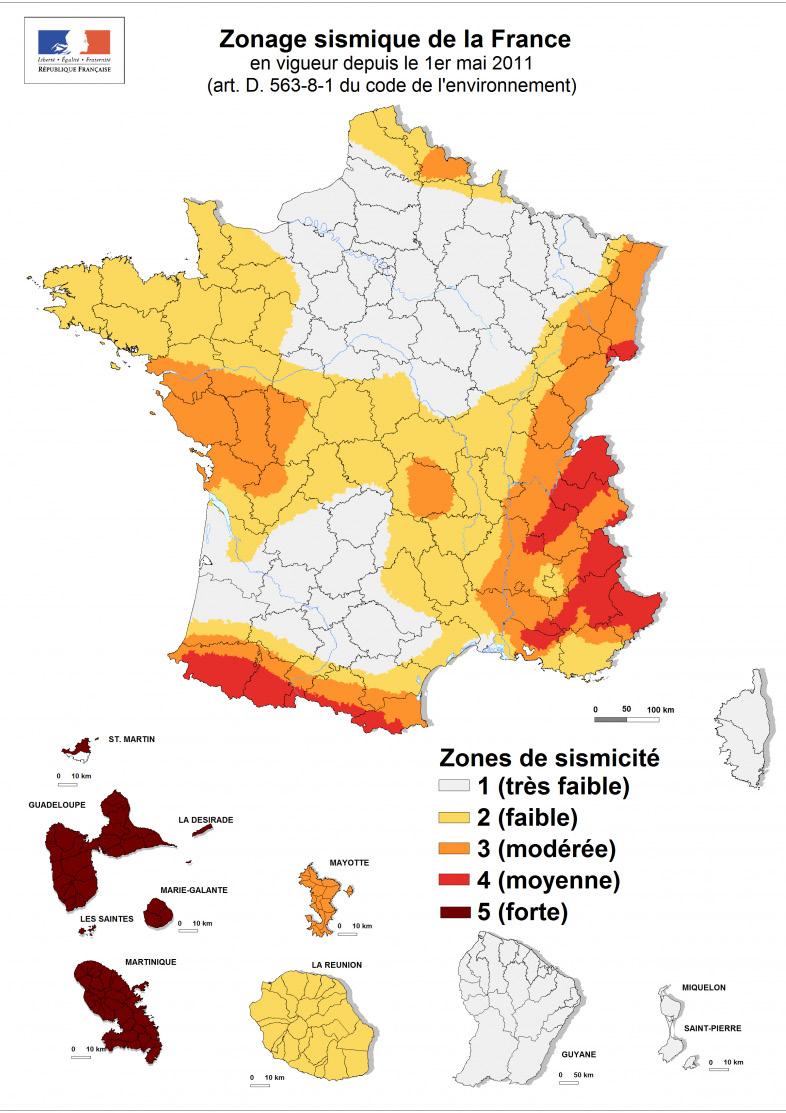
Science cannot predict earthquakes, but it can estimate the probability of a strong tremor affect-ing a certain region within a defined period. “Thanks to seismicity monitoring and historical data, it is possible to assess the seismic hazard. In France, five official zones have been defined, ranging from a very low hazard level, or level 1 in Paris, to a high level, in the French Antilles, for example. The AlpesMaritimes department is in a level 4 zone, but the earthquakes that regularly occur on the Côte d’Azur are generally of low magnitude and are not felt by the population,” says Françoise Courboulex. “You can see them for yourself on the Sismoazur website (https:// sismoazur.oca.eu/) set up by the Geoazur laboratory to record in near-real time the lat-est earthquakes that have hit the region. Beyond the seismic hazard, the effects of an earth-quake can vary locally, depending on soil composition and topography. These site effects can amplify seismic waves locally, and increase the damage caused,” adds the seismologist. Seismic risk therefore takes into account not only seismic hazards, but also the local vulnerability of build-ings and the population density. By assessing the seismic risk, we can implement preventive measures where they are needed, that will moderate the effects of an earthquake, such as earthquakeresistant building standards, clear information for the public and training for rescue teams.
In addition to seismic monitoring operations, the Geoazur laboratory also conducts research. “There are still many open questions about earthquakes,” notes Jean-Paul Ampuero, head of the Earthquakes – Cycles team and director of IRD research, who holds an IdEx Chair of Excellence. The researcher and his team focus on fundamental questions surrounding rupture mechanics. One of their major discoveries deals with large earthquakes with a magnitude greater than 6. “Classical theories consider that seismic ruptures propagate outward in a circle from the hypo-center, the point where the rock ruptured and the source of the earthquake,” explains the re-searcher. “But the earth’s crust is brittle over a finite thickness of about twenty kilometers. The ruptures of major earthquakes saturate this depth of crust and propagation then takes place horizontally. This elongated shape changes the dynamics of propagation, in particular its stop-ping conditions.” Based on this observation, Jean-Paul Ampuero and his team have developed a new dynamic theory to model major earthquakes and understand how they propagate, in order to anticipate their impact.
Some types of earthquakes can be particularly devastating. This is the case with supershear
earthquakes like the one that struck the Palu region of Indonesia on September 28, 2018. “This type of earthquake propagates at an unusual speed, faster than S waves. And the faster the waves propagate, the more damage they cause,” explains Jean-Paul Ampuero. Here again, two-dimensional theories do not adequately reflect reality. “According to classical models, some of these propagation speeds are not possible,” says the researcher. Taking into account the three-dimensional nature of earthquakes and the fact that movement on the fault can occur not only horizontally and vertically, but also obliquely, the seismologists have demonstrated that these unusual propagation speeds are possible. Yet until recently, very few earthquakes of this type had been reported in the scientific literature. An analysis of the rupture speeds of all earthquakes with a magnitude greater than 6 worldwide between 2000 and 2020 shows a completely different picture: at least 14% of them can be classed as supershear. “We are currently trying to repro-duce the characteristics of this type of earthquake in numerical simulations, which take into ac-count the finite depth of the brittle crust, in order to eventually develop indicators that can be incorporated into seismic hazard models.”
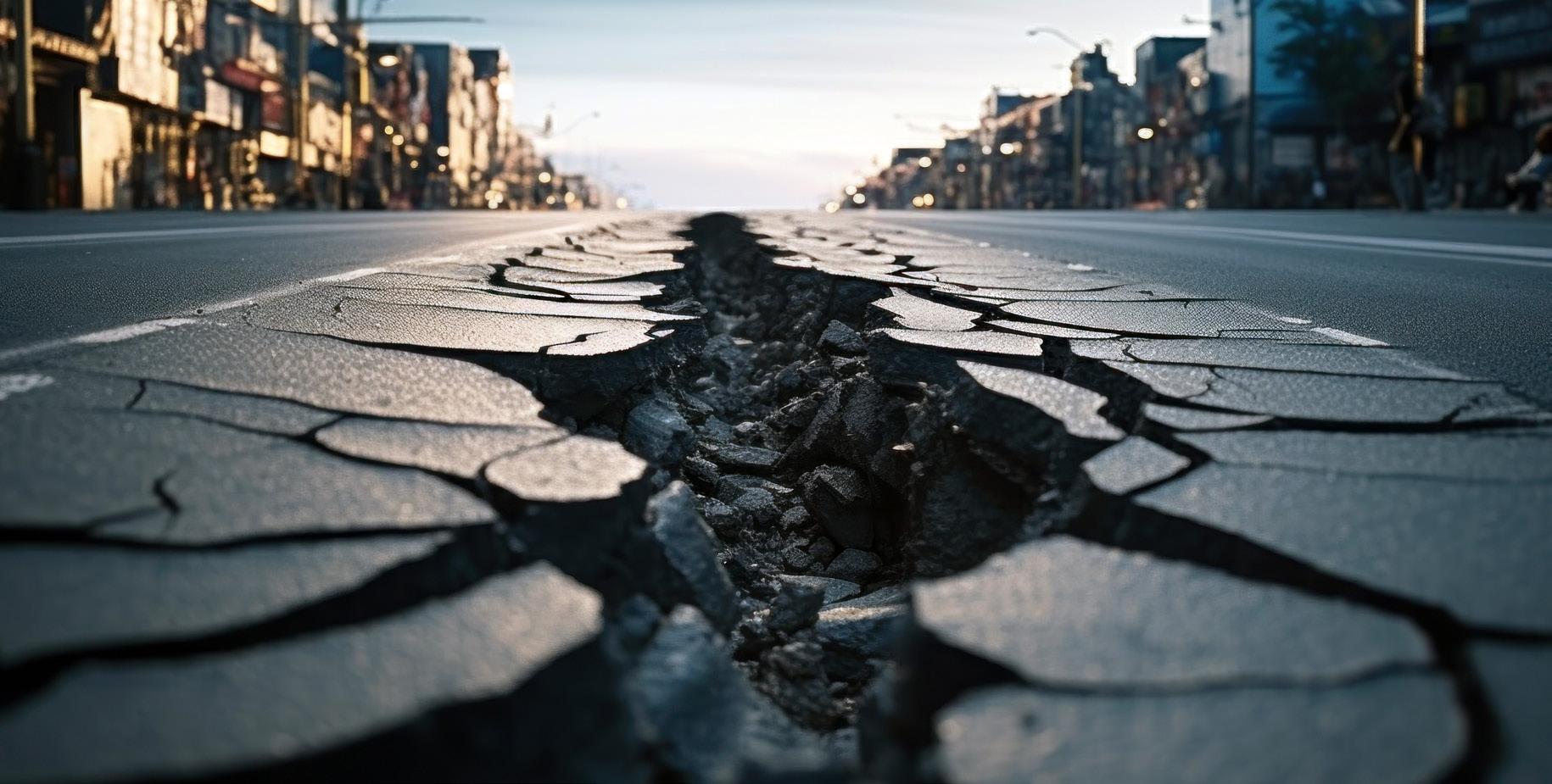
To improve the predictive capabilities of theoretical models, the acquisition of quality seismic da-ta is essential. To this end, Jean-Paul Ampuero’s team is looking for new ways to observe earth-quakes. “We have developed an innovative method for imaging major earthquakes, which uses the highfrequency seismic waves recorded by seismic sensor networks around the world, sometimes located more than 1,000 kilometers from the rupture point, to track their propagation and estimate their rupture speed,” adds the seismologist. With this technique, researchers were able to quantify the proportion of supershear earthquakes among large earthquakes. And to ob-serve that the quakes that had previously been missed by scientists often occurred at the bottom of the ocean. That is precisely where the problem lies when it comes to data. “There is a real need to place sensors on the seabed,” insists the researcher. Two-thirds of the planet’s surface is covered by oceans. Although it is possible to install seismological stations on the ocean floor, they are costly and need to be installed by research vessels that also periodically come and re-trieve the data. One novel idea is to use the optical fibers already installed on the seabed for rap-idly transmitting digital data over long distances. “With Fébus Optics, we have proved that it is possible to measure nanometric fiber elongations every few meters over distances of several tens of kilometers, which means that a fiber optic cable can become a hyper-dense seismological network, with tens of thousands of sensors,” the researcher enthusiastically exclaims. During an experiment on a 41-kilometer cable installed off the coast of Toulon, scientists were able to detect a small earthquake, even though it was located over a hundred kilometers from the fiber. Given that over a million kilometers of these submarine cables criss-cross the oceans, this

novel idea could provide an enormous mass of seismological data.
The Marine Geosciences, Observations and Innovative Imaging team led by Karin Sigloch is pursuing another idea for placing monitoring equipment in the sea. “We use floats that drift autono-mously in the oceans at depths of between 1,000 and 2,000 meters, while continuously recording ambient sounds using hydrophones,” explains the CNRS senior researcher, who was awarded an IdEx Chair of Excellence in 2021. “When the algorithm onboard these floats detects acoustic waves corresponding to the signature of an earthquake, the float rises to the surface to communicate this data and its location via satellite.” Developed by Geoazur in close collaboration with Osean, a company based in Le Pradet not far from the laboratory in Toulon, these floats called «Mermaids» are much less expensive than a marine seismological station, while providing important information for locating earthquakes in remote ocean areas. “With the data transmitted by three Mermaids, we were able to improve by several tens of kilometers the location of the focus of an earthquake not far from the Tonga Islands in the South Pacific, compared with the initial data recorded by land stations,” adds Karin Sigloch.

The data acquired by the Mermaids can be used to better characterize earthquakes, but be-yond that to study the Earth’s internal structure. Some seismic waves can cross the entire plan-et and be detected thousands of kilometers from the source of the earthquake. Depending on the nature and density of the matter they pass through, seismic waves propagate at different speeds. “For example, waves propagate more slowly in warmer regions of the mantle than in colder regions,” explains the geophysicist. “If we know when and where an earthquake took place, detecting discontinuities in the seismic wave velocities corresponding to this earthquake on the other side of the world provides us with information about the structure of
the planet.” Scientists used these seismic imaging methods to discover that beneath the Earth’s crust lies a mantle, which is divided into an upper and lower mantle, and a core, made up of an outer and an inner core. But to accurately describe the Earth’s entire internal structure, the ideal would be to create a dense network of seismological stations over its whole surface. This is feasible on land, but much more difficult on the ocean floor. That’s where the Mermaids come in. “This is the only technology currently available to monitor the oceans on a planetary scale,” the researcher is proud to say.
The aim of the EarthScope Oceans project is to use Mermaids to build a global network at sea,
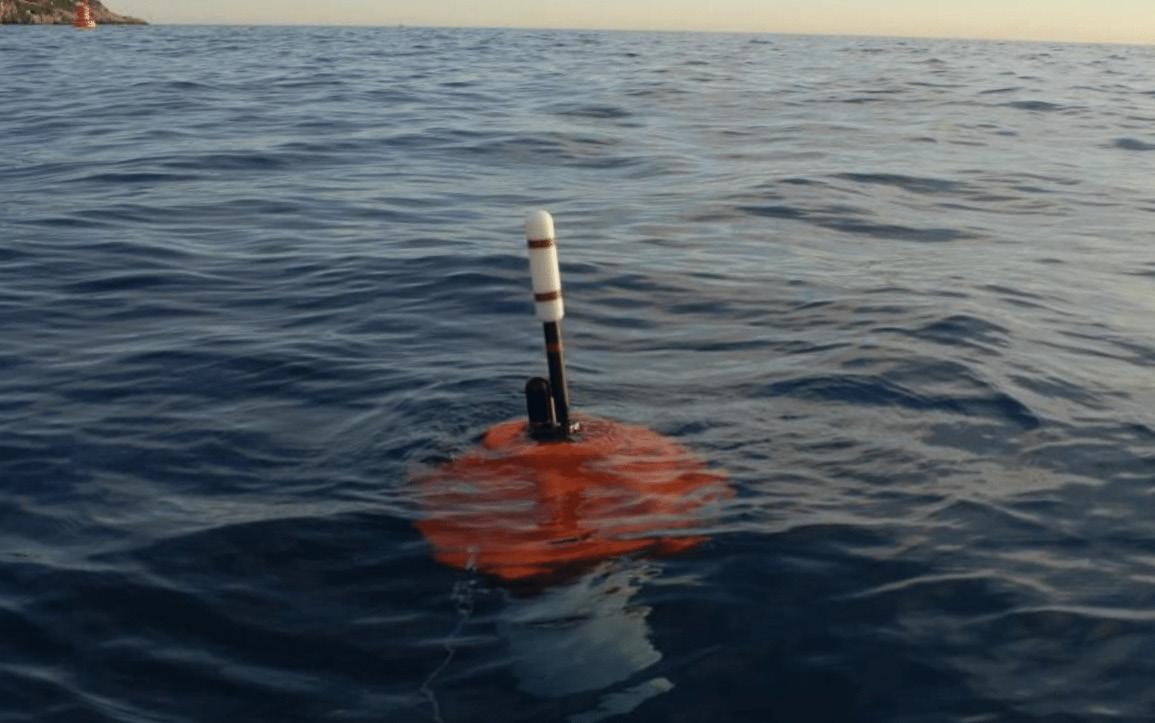
2 EarthScope Oceans : This consortium was created in 2016 and brings the Geoazur laboratory together with Princeton and Stanford Universi-ties in the USA, the Japanese Agency for Marine-Earth Science and Technology (JAMSTEC), the School and Observatory for Earth Sciences (EOST) in Strasbourg and the Southern University of Science and Technology (SUSTech) in Shenzhen, China.
3 Sppim : South Pacific Plume Imaging and Modeling
just as seismologists do on land. Today, some 70 Mermaids are operational, mainly in the South Pacific, but also in the China and Mediterranean Seas. They have been used notably to study mantle dynamics in the South Pacific as part of the Sppim project. “In some areas of this seismically and volcanically active region, you can find these chimneys, called plumes, that penetrate the mantle and pierce the surface in places known as hot spots,» explains Karin Sigloch. “These plumes are responsible for the formation of many Pacific islands, including the Galapagos, Hawaii and Easter Island.” An initial two-year exploration
around the Galapagos archipelago revealed one of these plumes of hot rock rising out of the mantle at a depth of 1,900 kilometers. Research is continuing in French Polynesia, where other plumes are active. The data collected should help us to understand why our planet’s interior has not cooled as quickly over geological time as some models predict. But the goal of the EarthScope Oceans project is not confined to the South Pa-cific. Eventually, scientists hope to deploy a few thousand Mermaids to cover the entire ocean. Their aim is to explore other hot spots on the planet, as well as subduction zones, where one tec-tonic plate passes beneath another.
In addition to this basic research, Geoazur scientists are also committed to applying their work to concrete problems, such as the development of early seismic warning systems. “We have trained artificial intelligence algorithms to detect, locate and determine the magnitude of an earthquake in the very first seconds following the arrival of P-type seismic waves at a single seismological station,» adds Jean-Paul Ampuero. These algorithms will be used in a warning sys-tem currently being deployed in Peru, a country regularly hit by major earthquakes. “Sirens will sound quickly in the area where seismic tremors are expected, giving people a few extra sec-onds to protect themselves,” says Jean-Paul Ampuero, who is particularly enthusiastic about this system , because he was born and raised in Peru. In the future, this device could use the undersea fiber optic cables that run along the country’s coastline to acquire seismological data as close as possible to the subduction zone off the coast of South America, also saving precious seconds. The most powerful earthquakes predominantly occur on subduction faults.
Another promising research direction is that of gravitational signals. «Large earthquakes move huge masses of rock, which disturbs the gravitational field,” explains the seismologist. The gravi-tational signals emitted can be recorded by seismometers. And as these signals travel at the speed of light, much faster than seismic waves, they can theoretically be used to develop an early warning system. “But these waves are difficult to distinguish because their amplitude is very low,” adds Jean-Paul Ampuero. However, by training AI algorithms to recognize the low ampli-tudes of these waves, scientists from the Earthquakes - Cycles team were able to make a signal emerge after just a few minutes. “That’s too long to issue a warning before the seismic shocks hit, but it’s enough to warn of the arrival of a tsunami, which generally takes ten to thirty minutes to reach the coast,” says the researcher. The algorithm developed is better at estimating the mag-nitude of the earthquake than conventional methods, which is even more useful and a definite advantage for determining the size of the waves in the event of a tsunami. However, seismolo-gists are
not giving up on the idea of developing an early warning system for earthquakes based on these gravitational signals. “More sensitive measuring instruments could help us distinguish these signals more quickly,” says Jean-Paul Ampuero, who is leading work in this area. But the holy grail for seismologists is to be able to predict an earthquake
before it happens. Recently, Quentin Bletery and Jean-Mathieu Nocquet of the Earthquakes - Cycles team found evidence of a precursory slip that signals the rupture a few hours before major earthquakes. This result, ob-tained using data collected by GPS stations, is perhaps the first step towards future predictive seismological models.
The cooperation between Geoazur and the Global South does not end with developing and im-plementing warning systems. “For several years now, we have been contributing to a participatory seismology experiment in Haiti,” reveals Françoise Courboulex. Although regularly hit by earthquakes, the few seismological stations in this small Caribbean country are barely operational, if at all, due to a lack of resources. This led to the idea of depending on motivated citizens to produce the data that seismologists need to characterize the seismic risk in the region. Seismol-ogists in return could share the scientific results with the participants and their communities and change their perception of the threat posed by earthquakes. This citizen science project, initiat-ed in 2019 by Éric Calais, senior researcher at the École Normale Supérieure in Paris, who is affili-ated with Geoazur, has led to the installation of low-cost, maintenance-free mini-seismological stations in volunteer homes and schools. “This is Raspberry Shake, based on Raspberry Pi mi-crocomputers,” says the seismologist. “These seismometers cost between €500 and €1,000 each and only need a power outlet and an Internet connection to operate.” These mini-stations form a citizen seismological network called ayiti-seismes, and their data are published in real time on the website https://ayiti. unice.fr/ayiti-seismes/. This network detected the powerful earth-quake of August 14, 2021, which

struck the Tiburon peninsula in the southwest of the island, kill-ing more than 2,200 people. The data collected helped to rapidly characterize the earthquake and its aftershocks. Furthermore, “this type of data gives us a better understanding of the ge-ometry of faults in the zone, and more specifically their depths, which helps us estimate their ca-pacity to produce new large earthquakes,” adds Françoise Courboulex. This is the subject of the thesis of Sylvert Paul, a Haitian doctoral student at Geoazur, whose fellowship is co-funded by IdEx.
Since 2022, the project has been known as Osmose, and is jointly funded by the French National Research Agency (ANR) and IRD’s CARIBACT joint international laboratory, in which several Hai-tian and French partners collaborate, including the Université d’État d’Haïti (UEH) and the Geo-azur laboratory. “To date, some 30 Raspberry Shake stations have been installed in the homes of volunteers, who are proud to take part in this scientific experiment,” Françoise Courboulex continues. Via the web interface, these seismo-citizens from all walks of life can view the earth-quakes their station has helped record. “This makes them aware of the seismic activity in the region. Some people are surprised to see that earthquakes occur on a daily basis in Haiti,” notes the researcher. In addition, a group page was created on social media where Raspberry Shake hosts can share their experiences and chat with the scientists in charge of the project. “Commu-nication is open with these volunteers, who are excited to learn more about earthquakes. This confirms that we can improve the dissemination of knowledge and awareness of seismic risk by giving citizens of the leading role in producing research data and scientific information,” empha-sizes Françoise Courboulex.
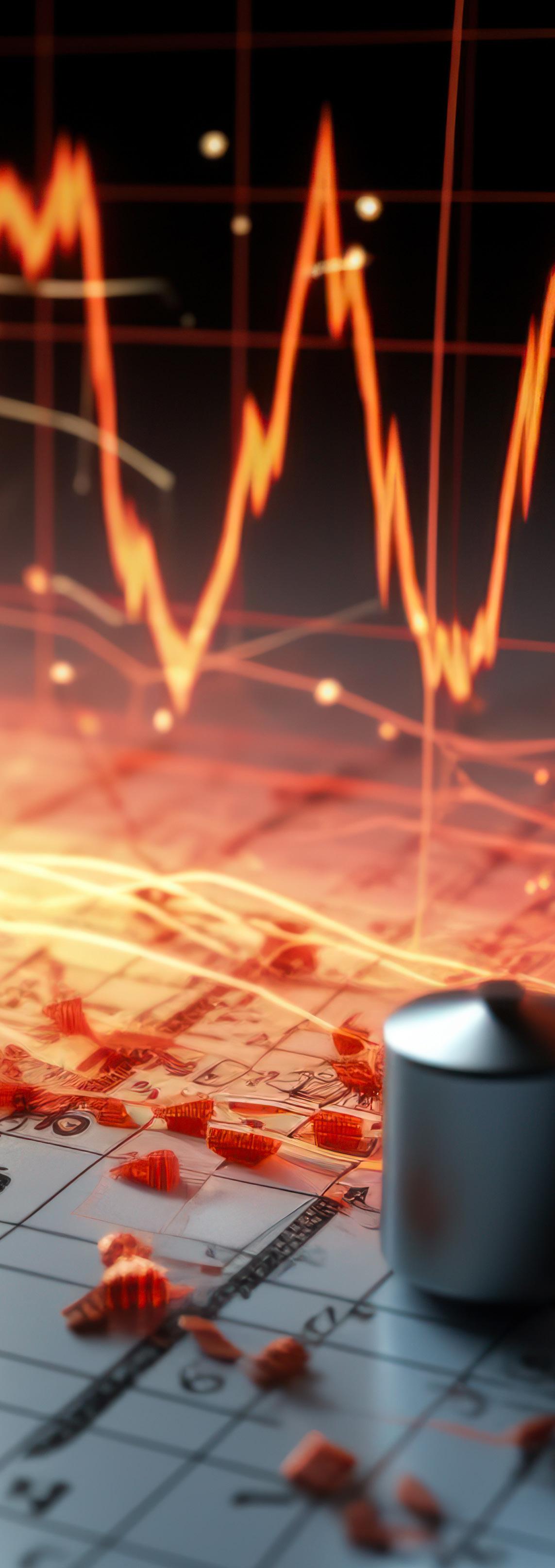
In addition to research and international cooperation, the Geoazur laboratory is also engaged in promoting knowledge of the geosciences through its educational platform, the Mediterranean Education Observatory (EduMed-Obs), supported by the Academy of Nice. “In addition to run-ning scientific workshops in schools, we provide secondary and higher education teachers with research data and the software they need to develop teaching projects in line with school cur-ricula in geosciences,” explains Julien Balestra, head of Geoazur’s education department and joint leader of EduMed-Obs with Fabrice Jouffray. EduMed-Obs collaborates with numerous schools, particularly in Nice and Guadeloupe, but also in Haiti and other countries. “Different sen-sors, including low-cost seismic stations like the Raspberry Shake, have been installed in several middle and high schools in these regions that are known for being seismically active. This sparks students’ curiosity and gives teachers the opportunity to work with their own data,” adds the research engineer. Through these educational projects, students not only deepen their knowledge of the geosciences, but also increase their awareness of natural hazards, particularly earthquakes. “Students can use the sensors to observe seismic phenomena with their own eyes and understand that earthquakes can occur in their immediate environment. We can then show them the dangers that can arise and encourage them to think about how to limit their impact, before explaining the important things to do in the event of an earthquake.”
In addition, EduMed-Obs has participated or is participating in the educational components of numerous research projects, such as the Osmose project in Haiti, the Hiper and Super-Mouv campaigns off the coast of Ecuador, in which a network of onshore and offshore seismometers was set up to study the subduction of tectonic plates

in the area, and NASA’s Mars InSight mis-sion, which recorded the first earthquake on the Red Planet. These projects, involving research teams from the Geoazur laboratory, are showcased on the EduMed-Obs educational distribution platform, available at http://edumed.unice.fr/. “This online resource allows us to introduce stu-dents to exciting scientific missions. It’s also an opportunity for them to take on challenges during the weekly educational sessions organized during scientific missions, to improve their scientific knowledge, develop their critical thinking skills and introduce them to the world of research. We also organize videoconferences with the scientists who take part in these missions, to highlight the different research professions,” says Julien Balestra. This strong connection between research, teaching and education is likely to inspire these students to take up careers in geosci-ence, and they may one day join the Geoazur team to better understand earthquakes and find new ways to limit the number of casualties as much as possible.
Simon PIERREFIXE

With the momentum given by IdEx, the Academies of Excellence are fueling the creativity and rejuvenation of research at Université Côte d’Azur.
This section highlights new concepts and innovative research projects arising from the inter- and transdisciplinary interactions taking place within the Academies of Excellence.
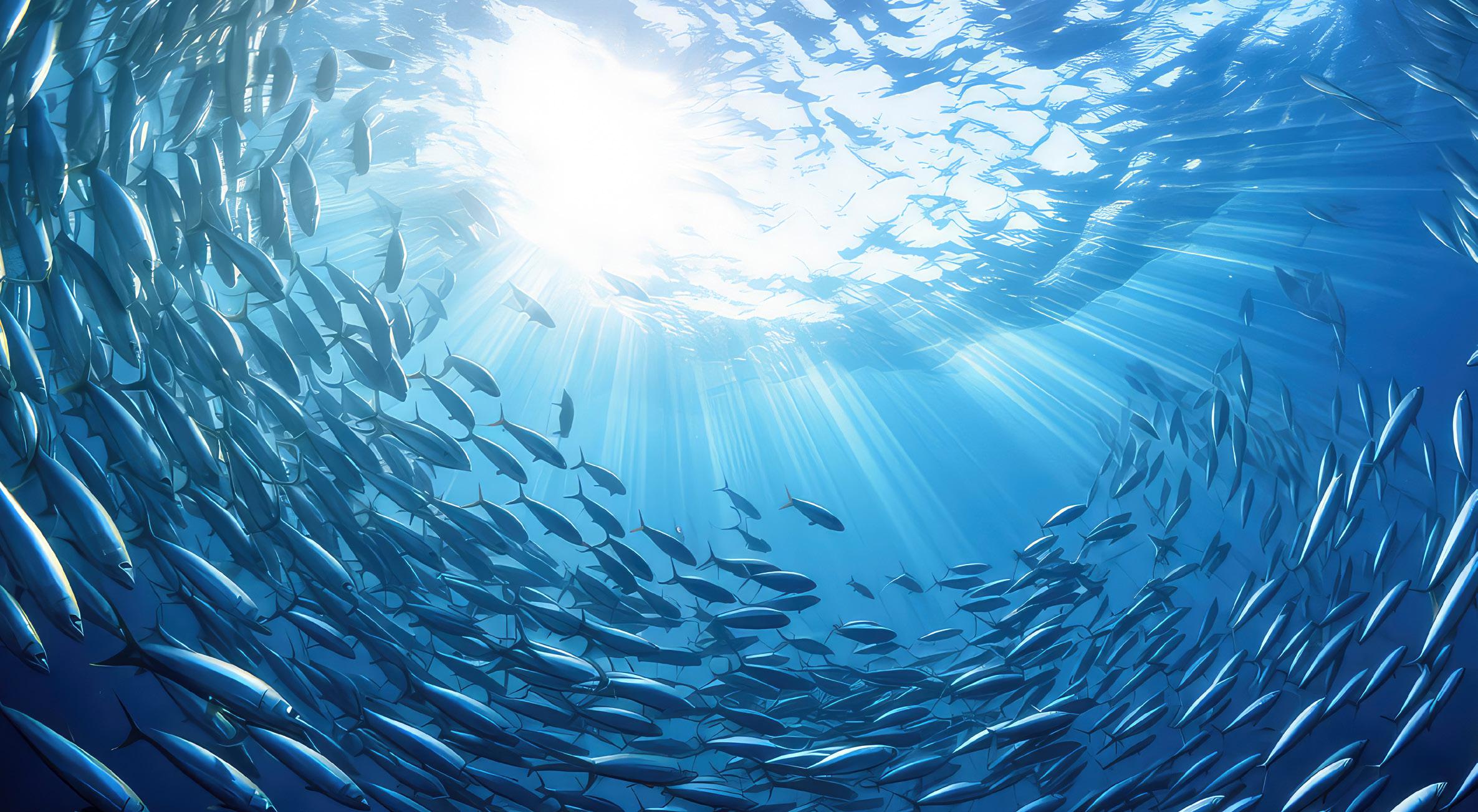
Exploring underwater life, locating and recovering objects, detecting pollution, and more — the applications for robotic fish are numerous. One of the main challenges remains remote control and maneuvering. This is the subject of Li Fu and Sardor Israilov’s research.
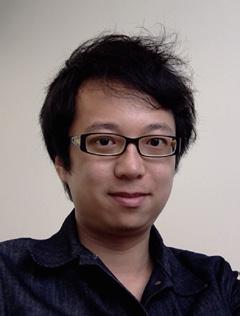
Li Fu Associate Professor, Ecole Centrale Lyon
Sardor Israilov
Doctoral student, Université Côte d’Azur, CNRS i3S

Fish movements are complex and not yet fully understood because research on the subject lies at the intersection between biology and fluid dynamics. Throughout history, humans have been inspired to innovate and develop systems similar to those we see in nature. Biomimetic robotic fish, in particular, have many real-world applications, but we have not yet perfected how to control them.
At the intersection of physics, robotics and computer science, the IBRID project, led by Guillaume Allibert of the I3S laboratory, arose from a collaboration between the INPHYNI and I3S laboratories and was carried out from July 2020 to December 2023.
Its main objective is to investigate complex fish movements by combining data-driven and modelbased approaches to robotic systems.
The initial challenge of this project was to achieve optimal swimming control by maximizing the thrust force. This required precise selection of the oscillation frequency and maximum amplitude of the fish tail’s
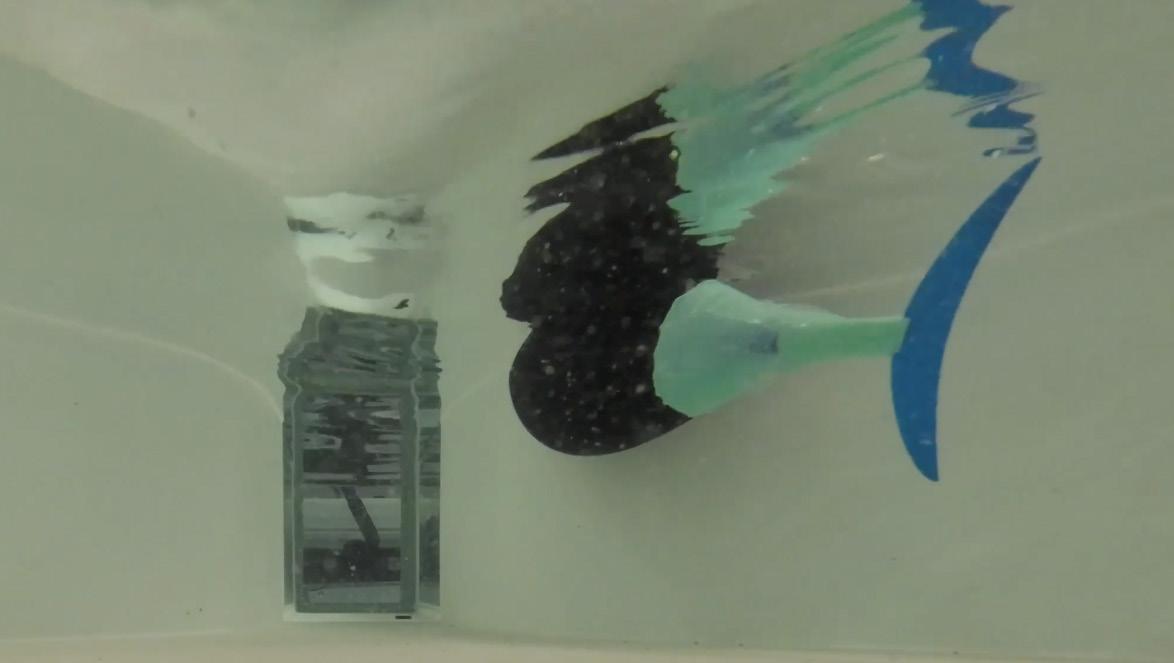
movement while swimming. Li Fu, a researcher with a PhD in polymer physics, tribology and rheology, took on this task during his 18-month postdoctoral fellowship, supported by Academy 1 Networks, Information and Digital Society.
In another part of the project, Sardor Israilov, a PhD student funded by the graduate school (EUR) Digital Systems for Humans, focused on the challenge of achieving autonomous movement in robotic fish. In his thesis, defended on January 30, he explored new ways of controlling a biomimetic fish via reinforcement learning, in order to efficiently maximize the thrust force and speed of movement. After showing that reinforcement learning could control an inverted pendulum without any prior knowledge, he focused on the undulatory swimming of a robotic fish. He showed that the thrust force of the robotic fish can be optimized by using inputs from

Force sensor (x and y)
Actuator (servomotor)
Flexible tail and skeleton
force sensors and cameras as feedback for control. His results show that square-wave control with a specific frequency maximizes thrust.
The clear advantage of biomimetic fish—a small, portable autonomous system—lies in its ease of deployment compared with traditional marine buoys. This is a real asset in helping to better preserve our aquatic environment.
The potential spin-offs of this project are considerable in the field of environmental monitoring. Applications include control of water quality in rivers, seas and oceans.


In 2015, in response to our planet’s climate and societal emergency, the United Nations 2030 Agenda for Sustainable Development established a list of Sustainable Development Goals (SDGs). These 17 goals combine the three dimensions of sustainable development—economic, social and environmental—and represent a universal call to action to minimize the impact of our societies on the planet’s environmental balance. With its focus on natural and human-caused hazards and risks, Academy 3 Space, Environment, Risks and Resilience has naturally taken this commitment into account in structuring its activities. To this end, the Academy encourages new approaches to research that overcome the current fragmentation of disciplines. We aim to go beyond monodisciplinary proposals, to help build a methodology that responds to societal issues with a purposefully interor transdisciplinary approach. Since 2020, the Academy’s strategy has been based on a selection of eight clustered SDGs that fall within its scientific perimeter; these are grouped into four research themes:
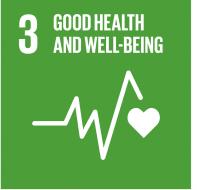
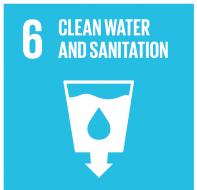

Anthropogenic health and environmental risks



Natural risks and their impact on the environment, cities and societies


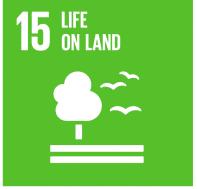
Energy and resource-related environmental challenges
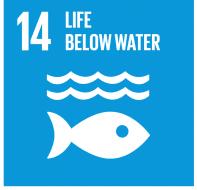

Risks specific to oceans and coastal areas
By placing an emphasis on understanding socioenvironmental issues and defining their impact, the work supported and initiated by the Academy fits directly into the SDG clusters (a criterion for eligibility). The Academy’s scientific policy encourages consideration of the costs and benefits of proposed actions at different spatial and temporal scales.
Over the last four years, the projects supported by the Academy have encouraged transdisciplinary thinking.
Four SDGs stand out and highlight the current concerns of our scientific community:
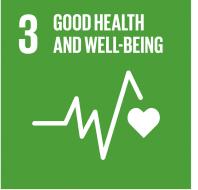
SDG 3: To ensure healthy lives and promote well-being for all at all ages
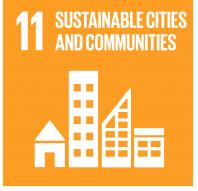
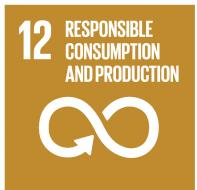

SDG 11: To make cities inclusive, safe, resilient and sustainable
SDG 12: To ensure sustainable consumption and production patterns
SDG 13: To take urgent action to combat climate change and its impacts
After implementing these SDGs for a few years, we have added SDG 16 – To promote just, peaceful, and inclusive societies — to the eight SDGs that form the foundation of the Academy’s strategy, demonstrating our project leaders’ determination to forge connections with society and its institutions.

Overview and breakdown of the SDGs identified in Academy 3 projects between 2020 and 2024.
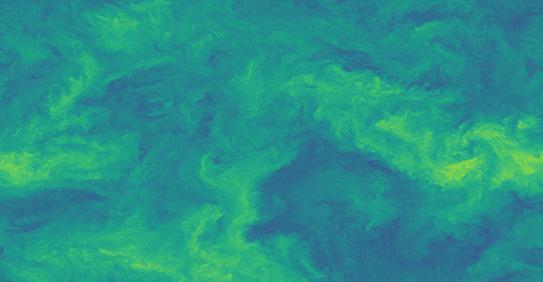
As 2024 opens with a brand new thematic semester dedicated to Biomechanics, we look back at the achievements of the thematic semester on turbulence that took place in 2023. The program was supported by a grant from Academy 2 Complex Systems. Program coordinator, Christophe Brouzet, CNRS researcher at the Nice Institute of Physics (INPHYNI) tells us about it.
Why hold a thematic semester on turbulence at Université Côte d’Azur?
Nice and the Côte d’Azur have a long tradition of turbulence research. This region has historically been home to a large scientific community working on many aspects of turbulence. The community is recognized internationally but is scattered across five laboratories on different campuses of the university. It has recently grown with the addition of three young researchers, recruited by CNRS and Université Côte d’Azur. These new arrivals have motivated us to develop the community even more.
Why is it important to support turbulence research today?
Turbulent flows are ubiquitous in everyday life and have far-reaching implications for our global environment. It is essential to understand, predict and control these flows, for both practical reasons (to optimize the shape of wind turbines, for example) and fundamental ones (to better understand climatic phenomena or the formation of stars).
But turbulence remains one of the major challenges of the twenty-first century. Turbulent flows are incredibly complex systems, combining a multitude of complicated physical properties (nonlinear, multi-scale, out-of-equilibrium, dissipative, etc.). This continues to pose a problem not only for physicists, but also for mathematicians and engineers. Modeling these flows in all their complexity requires a multitude of scientific approaches, with experimental measurements, numerical simulations and theoretical considerations.
What were the highlights of this thematic semester?
The thematic semester gave us the opportunity to organize three international conferences on turbulence, on three subjects in which Nice researchers are recognized for their excellence. The semester also led to the creation of a two-week summer school on turbulence that will become a regular event held every two years in the Nice region. International events of this kind in the region have placed Université Côte d’Azur at the center of the world map for turbulence research in 2023.
What does the future hold?
Thanks to the support of the thematic semester, a dozen researchers were invited to spend several weeks in our laboratories. This has helped us to maintain previous collaborations and initiate new ones, which is essential for the long-term development of our research. Finally, we acquired a common database during the semester to share data between collaborating researchers within the
University. It will also be used to publish some of our data in open access, which will raise the profile of our community in the future.
Turbulence refers to the state of flow of a fluid, liquid or gas, in which the velocity at any point is turbulent, that is, it contains vortices whose size, location and orientation are constantly changing. Turbulent flows are therefore characterized by a highly disordered appearance, behavior that is difficult to predict, and the existence of numerous spatial and temporal scales.

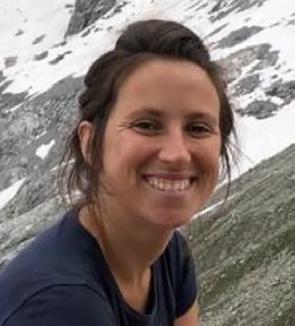
Italian neurobiologist Bianca Silva, recipient of an ERC starting grant in 2021, joins the community of biologists working with the Academy 4 Complexity and Diversity of Living Systems at the Institute of Molecular and Cellular Pharmacology in Sophia Antipolis
Bianca Silva is interested in the neuronal basis of emotions. After obtaining a Master’s degree in medical biotechnology from the University of Milan, where she studied oxytocin receptors, Bianca joined Cornelius Gross’s group at EMBL-ROME for a thesis on fear-generating mechanisms in the brain. She discovered that social and predator fear, two evolutionarily conserved stimuli, do not follow
the standard fear circuits in the amygdala, but rather depend on the hypothalamus. For her postdoctoral research, she is focusing on a more translational aspect of basic neuroscience, looking at how to attenuate long-lasting fear memories. She joined Johannes Graff’s team at the Ecole Polytechnique Fédérale de Lausanne on an EMBO postdoctoral fellowship. Using chemogenetics, optogenetics, functional connectivity analysis, calcium imaging and viral tracing, she discovered a thalamoamygdala circuit that mediates the attenuation of fear memories.
In 2021, Bianca won an ERC Starting Grant for the «Ethofearless» project and established a laboratory at the Italian National Research Council. In October 2023, she joined Université Côte d’Azur at the Institute of Molecular and Cellular Pharmacology
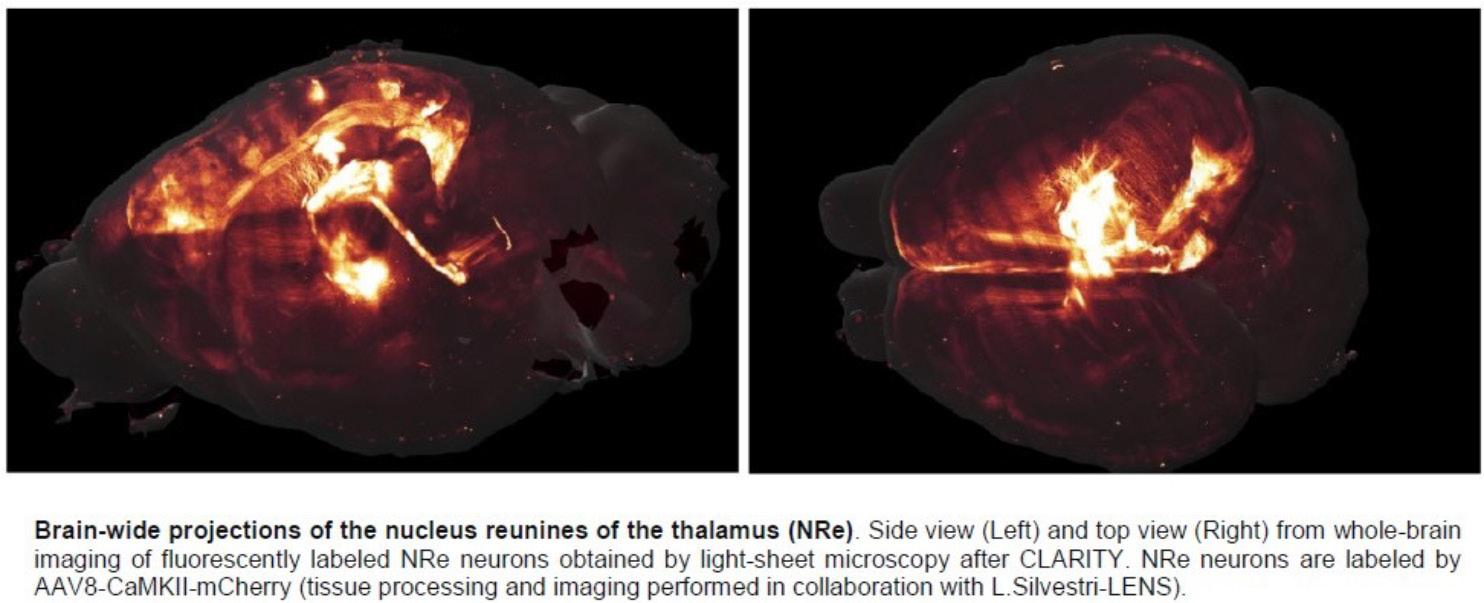
(IPMC), with co-funding from Academy 4 Complexity and Diversity of Living Systems to develop her interdisciplinary ERC project on the Côte d’Azur.
Bianca: «My initial plan was to carry out my research in Italy, but I decided to join Université Côte d’Azur because I firmly believe that IPMC offers an environment more conducive to the success of my project, with facilities of exceptional quality, a supportive research environment and easy access to interdisciplinary scientific knowledge. I’m convinced that this decision was in the best interests of the project, but it came with unexpected costs associated with moving my entire Italian team. These costs were not included in the initial project budget and required additional funding. For this reason, the co-funding I received from the university from the very first year was very important for me.»
New way for new therapeutic interventions to treat post-traumatic stress disorder
Bianca adds: “My lab analyzes functional brain connectivity using light-sheet microscopy and optogenetic techniques to discover how intense emotional memories can be weakened. Our research focuses particularly on the contribution of neural networks in the medial thalamus that orchestrate the activity of distributed memory circuits in an integrated manner. We are also studying pathological alterations within these thalamocentric circuits in mouse models of fear-related disorders. We aim to identify new strategies for reversing these alterations in fear circuits and pave the way for new therapeutic interventions to treat post-traumatic stress disorder»

One of the missions of Academy 5 Human Societies, Ideas and Environments is to support researchers in the humanities, social sciences and arts, and create new interdisciplinary collaborations with a social impact. The Enharmonie project on the biopsychosocial determinants of the health of professional orchestra musicians is a clear example.
The project began when a professional orchestral musician, Anne Maugue (principal and solo flute of the Monte-Carlo Philharmonic Orchestra) contacted Dirk Steiner, Professor of Social, Work and Organizational Psychology (LAPCOS), to develop a doctoral project on the health of professional musicians. Motivated by informal observations in her workplace, she wanted to gain a deeper
understanding of the causes of the musculoskeletal disorders that often affect professional musicians in a severe and even chronic way.
Researchers, doctors and institutions have known since the 1980s that these disorders are common among musicians, similar to top-level athletes, , but the has not improved despite the introduction of prevention programs. It therefore seemed worthwhile to test the hypothesis that psychological factors have an impact on the healing process, and more specifically negative psychological reactions following perceptions of injustice. The sense of justice at work is an established subdiscipline of work psychology, and shows how employees’ perception of the organization of the workplace

(fairness, transparency, coherence, interactions) influences their mental and physical health. With the help of Serge Colson, Professor of Exercise Physiology (LAMHESS), a complex study protocol was put in place. Between 2021 and 2022, with financial support from Academy 5, a national experimental study was carried out combining laboratory measurements on professional musicians playing their instruments, questionnaires and health data collected from several national orchestras, in partnership with hospital facilities. Additional funding was provided to Laetitia Blanc, a Master 2 student (IPPTRH; Psychosocial engineering and psychology of work and human resources), who contributed to the study during an internship at LAPCOS (2023).
The study shows that pain is often hidden by musicians, who find there is no means or place in their work context for it to be acknowledged. This contributes to emotional exhaustion, which
influences their sense of justice at work and therefore has an impact on musculoskeletal disorders. This research opens up new perspectives on preventive health by highlighting the role of organizational justice in health and well-being at work.
These results were publicized in a television report (Le Magazine de la santé, France 5) and at a public conference and concert in December 2023, where visiting professor Bronwen Ackermann, from the University of Sydney, presented an Australian example of formalized health protocols for professional musicians.
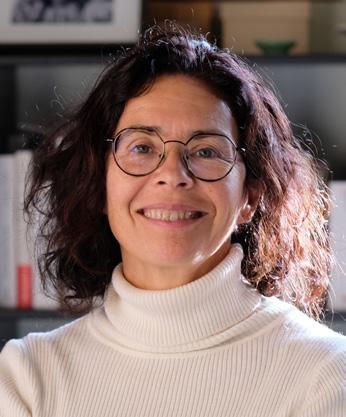
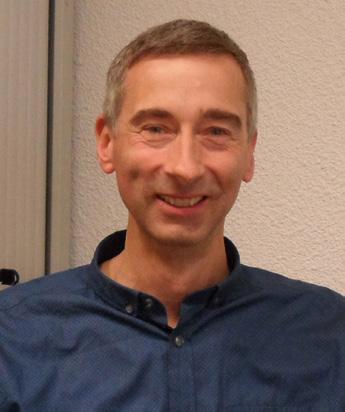
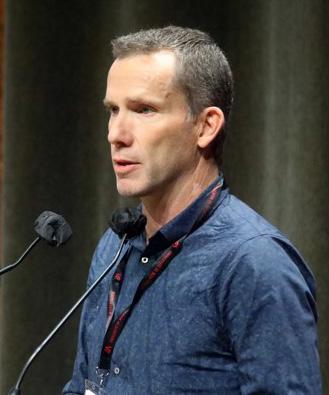
Anne Maugue, Doctoral student at LAPCOS, first solo flute of the Monte Carlo Philharmonic Orchestra, EUR HEALTHY
Pr. Dirk Steiner, Professor of Work and Organizational Psychology (LAPCOS), EUR HEALTHY
Pr. Serge Colson, Professor of Exercise Physiology (LAMHESS) EUR HEALTHY

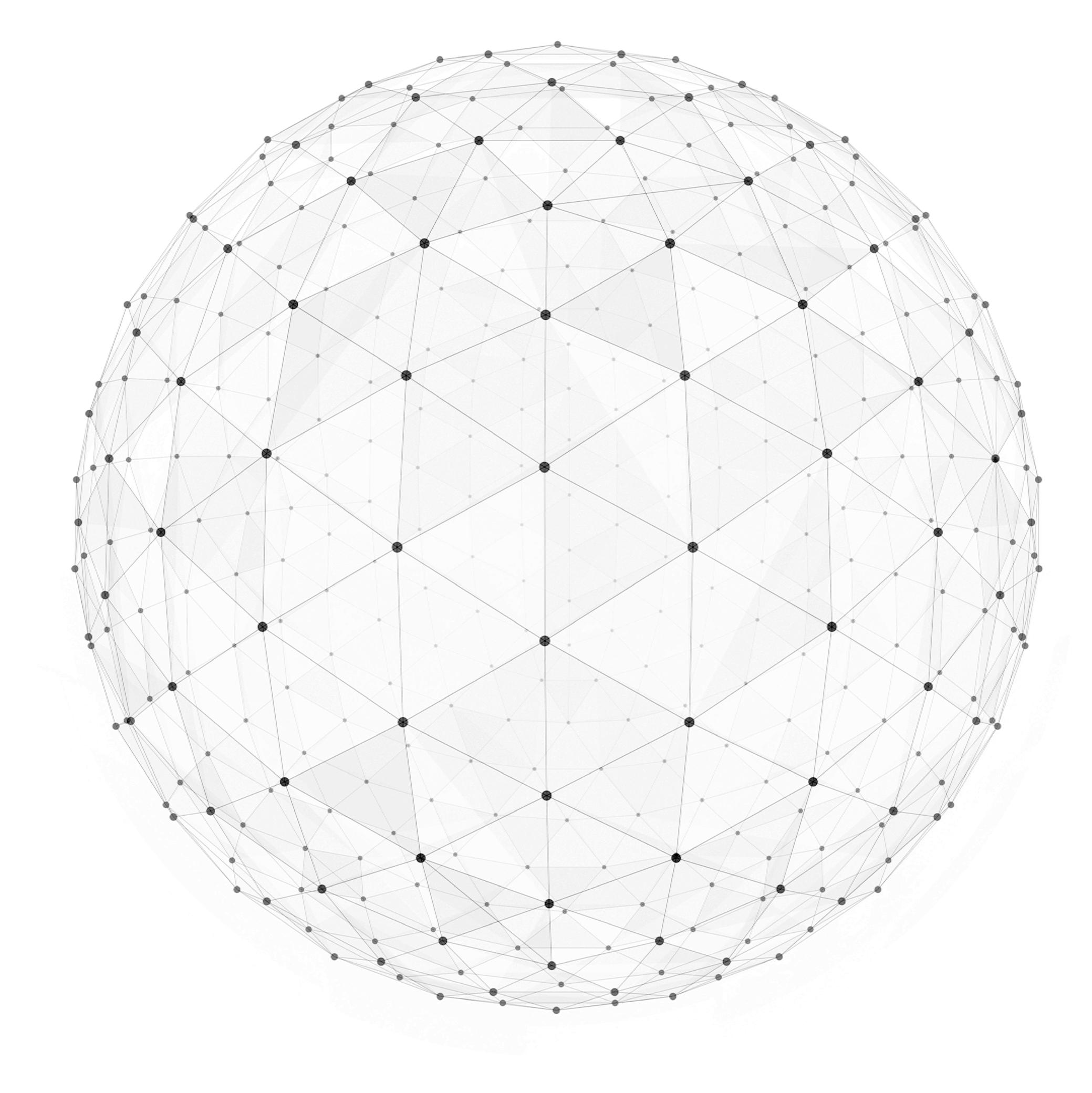
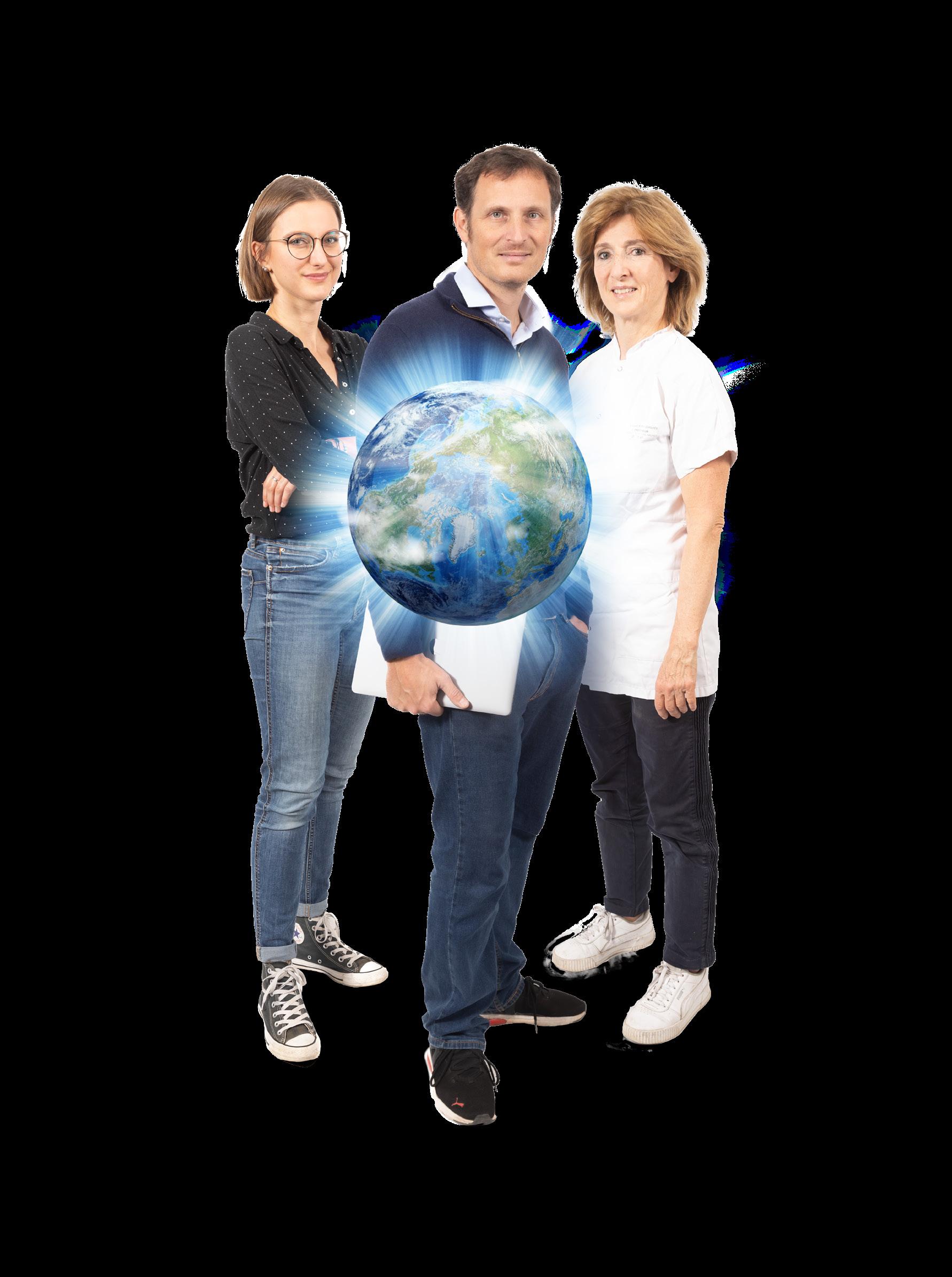

It’s vital for entrepreneurs not to confuse the notion of invention with that of innovation. Innovation is defined as the introduction into the market of a product or process that is new or significantly improved compared to those previously developed (INSEE definition - Nov. 2020). In other words, an innovation is an invention that has found a market.
An innovation is an invention that has found a market
This achievement is based on the ability of inventors to develop their technology as a product or service. It comes from an understanding of the impact that the development of an innovation will have on the growth of their (future) company, and its ability to keep pace with the technological evolution of its competitors and customers.
Some clues to reaching this goal can be found in the innovation typology proposed by C. Markides and P. Geroski,REF which is based on two dimensions: the impact on the skills and assets of established firms, and on the habits and behaviors of consumers.
Thus, an innovation can be defined as incremental,
major, strategic or radical. It is said to be incremental when its impact on these two dimensions is low. In contrast, if the skills and assets of established firms are destroyed, while at the same time totally new uses for consumers are created, this innovation is described as radical. C. Markides and P. Geroski also suggest that startups are fertile ground for radical and major innovations. The environment of a large company is more conducive to incremental or strategic innovations.
Through its two calls for proposals, DeepTech Startups and Innovation Partnerships, the IdEx Université Côte d’Azur Innovation program promotes innovation in two ways: assisting the creation of a DeepTech startup company; encouraging innovative collaborative R&D between a team of researchers and a private company.
By financing technology transfer projects within startups or industrial companies, the Excellence Initiative of Université Côte d’Azur supports the commercialization of major or radical innovations resulting from Côte d’Azur research.
The startup Evolutive Agronomy was launched in November 2023, arising from a successful Deeptech Startup proposal in 2021. Founded by three researchers, Lucie Monticelli, Antoine Pasquier and Nicolas Desneux, it offers a service that helps farmers optimize the use of biocontrol products, thereby reducing their environmental impact while optimizing their yields.


The service is based on an innovative alternative to chemical pesticides developed by the Sophia Agrobiotech Institute (ISA), a joint INRAEUniversité Côte d’Azur unit.
The research team has devised a customized solution for transporting and applying biocontrol agents. Based on a new mathematical modeling approach, Evolutive Agronomy’s technology allows farmers to control pest populations as effectively as possible.
The agent used is a predatory mite that lives in the soil and can control several pests that have at least one stage of development in the soil, as demonstrated by the team’s work on corn rootworm.
By supporting this project, IdEx is contributing to the development of alternatives to the use of chemical pesticides. At a time when the world of agriculture is dealing with the effects of climate change, biocontrol technologies such as those offered by Evolutive Agronomy offer effective solutions for healthy food and sustainable soil preservation.
Such developments in biocontrol technologies align with the Ecophyto II+ plan led by the French Ministry of Agriculture and Food Sovereignty, which aims to reduce the use of pesticides by 50% by 2025.
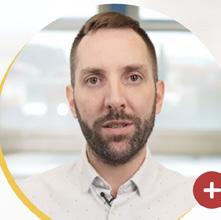
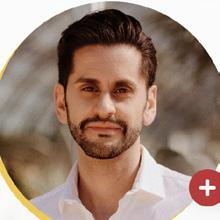

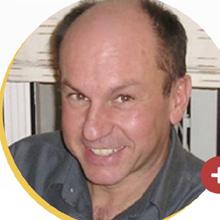
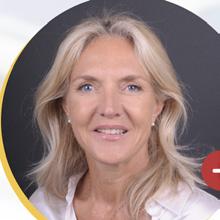
The startup ExAdEx-Innov was created in August 2022.
The driving force behind this exciting venture (which began in 2021) is a multidisciplinary team of the Côte d’Azur’s leading researchers: Vincent DaniDavesne (current CEO, formerly postdoctoral fellow at the Valrose Institute of Biology); Luigi Formicola (current COO, Entrepreneur in Residence for CNRS Innovation); Christian Dani, Research Director at INSERM; Alain Doglio, head of the Cell Therapy Unit (UTCG) at Nice University Hospital; and Bérengère Chignon-Sicard, surgeon in the Plastic and Reconstructive Surgery Department, also at Nice University Hospital.
Supported by IdEx Université Côte d’Azur through its two calls for projects in 2021 (DeepTech Startups) and 2023 (Innovation Partnerships), this young company has developed and patented a novel technology for preserving viable, functional human fat tissue in the laboratory.
Thanks to this new process, ExAdEx-Innov has created a unique research platform based on clinically relevant human adipose tissue. Today, this platform is used by the startup’s customers and partners in the fields of dermocosmetic, nutraceutical and pharmaceutical research, notably for the creation of new therapies for the treatment of obesity and chronic metabolic diseases.
The technology codeveloped by ExAdEx and its academic partners from IdEx Université Côte d’Azur opens up new prospects for the development of innovative approaches (biotherapies, biomedicines, etc.) to treat patients with complex metabolic disorders linked to obesity who are experiencing treatment failure. It makes it possible to convert white fat from obese patients (which stores excess energy) into therapeutically interesting beige fat (which consumes excess energy, enhancing metabolism)
ex vivo, and therefore allows researchers to study the impact of the obese environment that is limiting this beneficial effect.
The startup and the Institute of Molecular and Cellular Pharmacology are working in partnership to determine a complete signature of both obese adipose tissue and beige fat product. Located in

the Bio-Incubator of the Valrose Institute of Biology (iBV), ExAdEx-Innov is also supported by the Côte d’Azur innovation ecosystem. The startup project was supported and funded by CNRS (CNRS Innovation program Rise, prematurity stage), SATT Sud-Est and the Provence Côte d’Azur Incubator. The company, which has been awarded the DeepTech label by BPI France, received the 2022 Prix Entreprise Innovante (Innovative Company Prize) from the Nice Côte d’Azur Metropolis, and was selected by Challenges magazine as one of the «100 startups in which to invest in 2023».
The DareWin Evolution project is the result of more than ten years of Côte d’Azur research, carried out at the National Institute for Research in Digital Science and Technology (Inria) center at Université Côte d’Azur, in collaboration with the Laboratoire d’Océanographie de Villefranche (CNRSSorbonne University).
Following a year of maturation at the Inria Startup Studio, the project successfully applied for an IdEx DeepTech Startup grant in 2023, received support from the Nice Côte d’Azur Metropolis and won the i-PhD prize (supported by the French government in partnership with Bpifrance), before finally joining the Provence Côte d’Azur Incubator. Thanks to this major support, the startup is expected to be launched in 2024. Its goal is to market the first natural and reliable selection method to optimize microalgae strains used in the agri-food industry (human food and nutraceuticals).
Current microalgae production technologies are still in their infancy, and many obstacles remain before they can be used on a large scale. The microalgae used are not widely cultivated and are poorly suited to the production conditions imposed by manufacturers. The production costs of molecules of interest such as omega-3 and some pigments have also been shown to be at least 20% higher than their synthetic counterparts made from non-sustainable sources. These additional costs restrict the use of these molecules to high value-added applications. Yet we urgently need to find sustainable approaches to tackle climate change and biodiversity erosion. The development of «blue» biotechnologies explicitly addresses these issues. Microalgae are a source of innovation offering new economic and ecological prospects. As a comparison, producing algae consumes three times less water and emits three times less CO2 than other sources of biomass such as fishmeal from overfishing. Microalgae can be used in a wide range of promising sectors,
including human food, animal feed, bioremediation, cosmetics, healthcare and green chemistry, making them a promising alternative material that opens up new industrial opportunities. According to a report published by Polaris, the global microalgae market was valued at over $1 billion annually in 2022, and will continue to grow at 5.4% per year until 2032. DareWin Evolution will carry out natural varietal selection for industry, providing companies with strains of microalgae that perform better (better growth, increased content of the molecules of interest) and are ultimately of higher quality. The startup leaders, together with microalgae growers and specialists have estimated that productivity gains of factors of 1.5 to 3 times are likely, boosting companies’ gross margins. Darewin Evolution is already capable of multiplying the production of a microalgae strain by a factor of two in less than nine months.
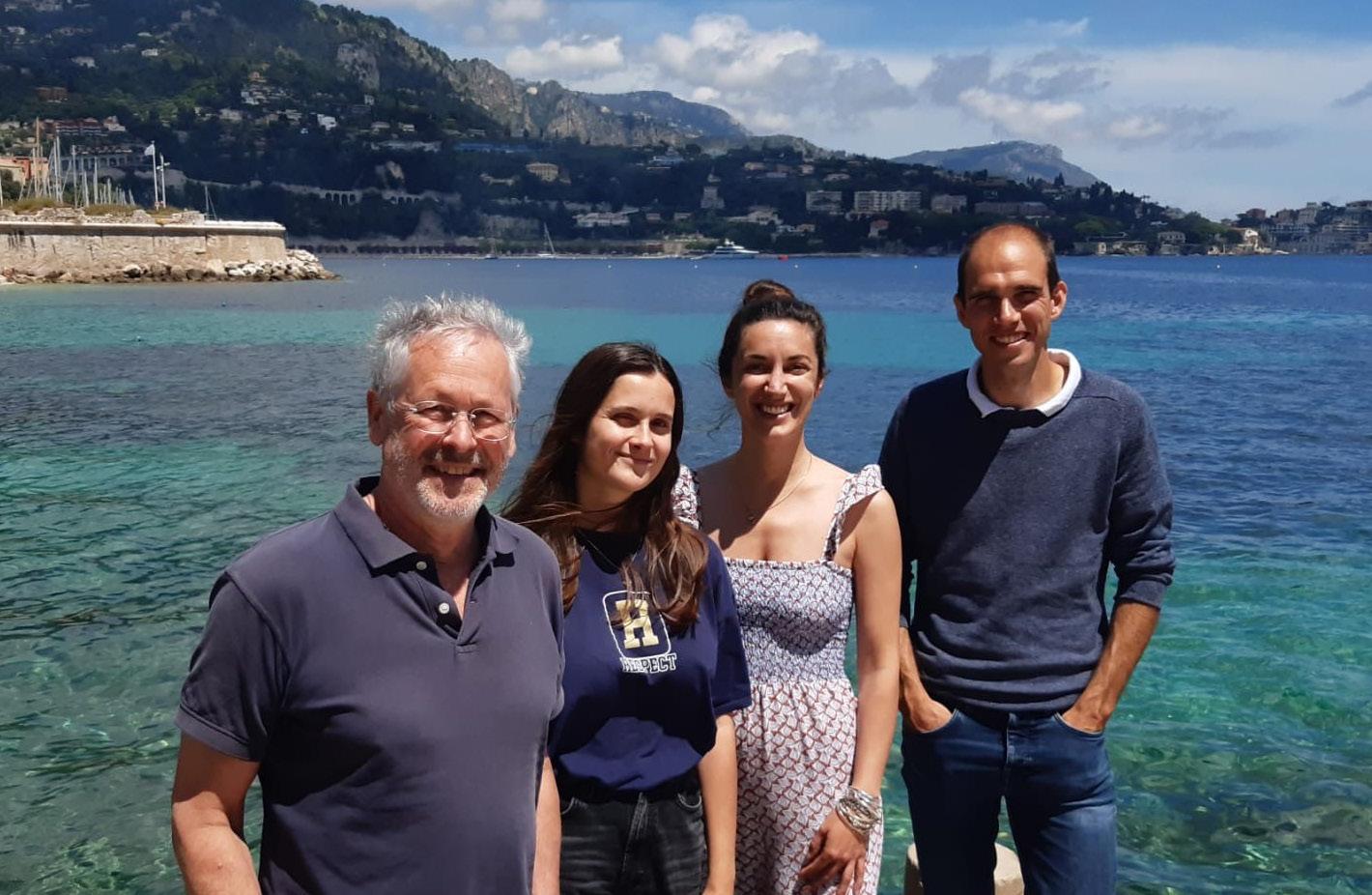
The technology commercialized by the startup was first developed in 2011 by the BIOCORE team (Inria Université Côte d’Azur, CNRS, Sorbonne University), then enhanced by a team of young researchers (Charlotte Gaviard and Alice Guillet), in association with Hubert Bonnefond and Olivier Bernard at the Laboratoire Océanographique de Villefranche (IMEV, CNRS, Sorbonne Université). Outstanding technical results, a natural approach, risks shared with customers and fast results, these are the competitive advantages that the startup will capitalize on when it is created
Sept. 25, 2024
Third IdEx Tour
“How to boost your projects with the help of the IdEx research, innovation, international & Europe programs”
At the Villa Arson – Nice
Sept. 30, 2024
Launch of the 2024 initiatives of the IdEx international program:
• Call for contributions to the second mirror COP.
• Call for manifestations of interest in writing academic advocacy pieces linked to sustainable development goal 13.
• Launch of the initiative to internationalize the Thematic Schools.
• LEADEuRope program: launch of coaching for ERC 2025 grant proposals.
From Nov. 11 to 22, 2024
“En route to the COP climate conference”
Second edition
32 000 STUDENTS
MORE THAN 50 RESEARCH LABORATORIES
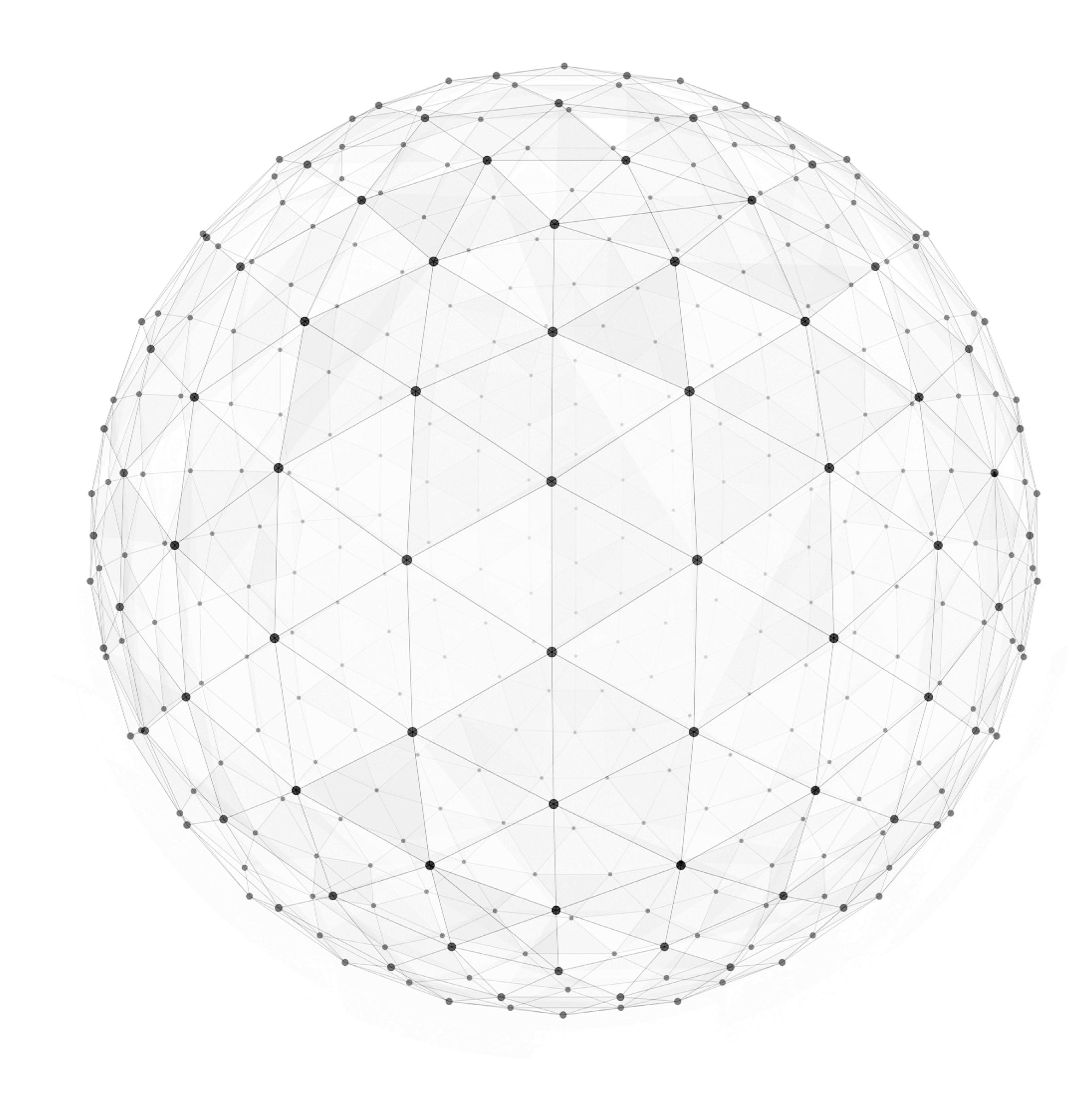
MORE THAN 100 INTERNATIONAL PARTNERS
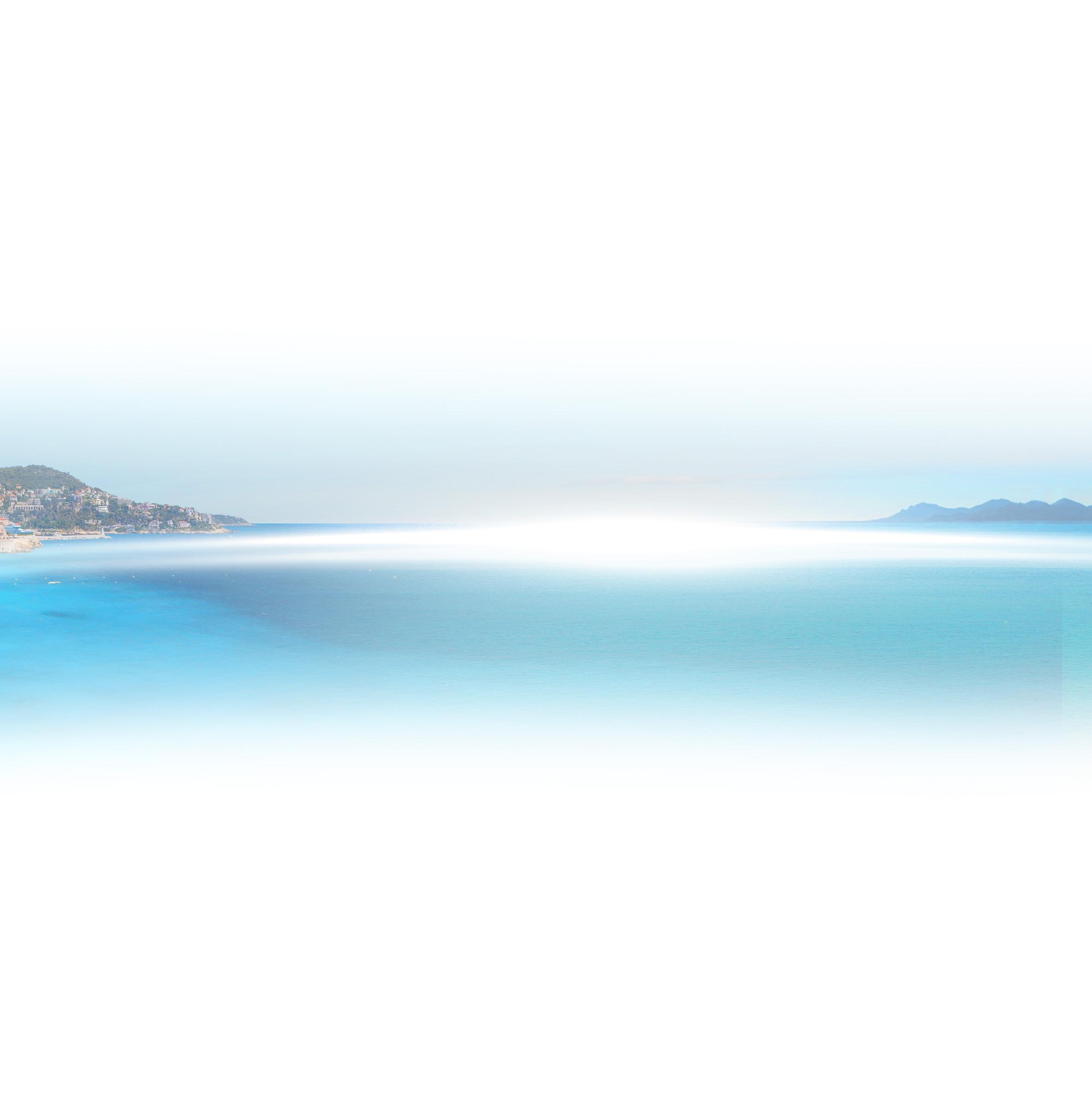
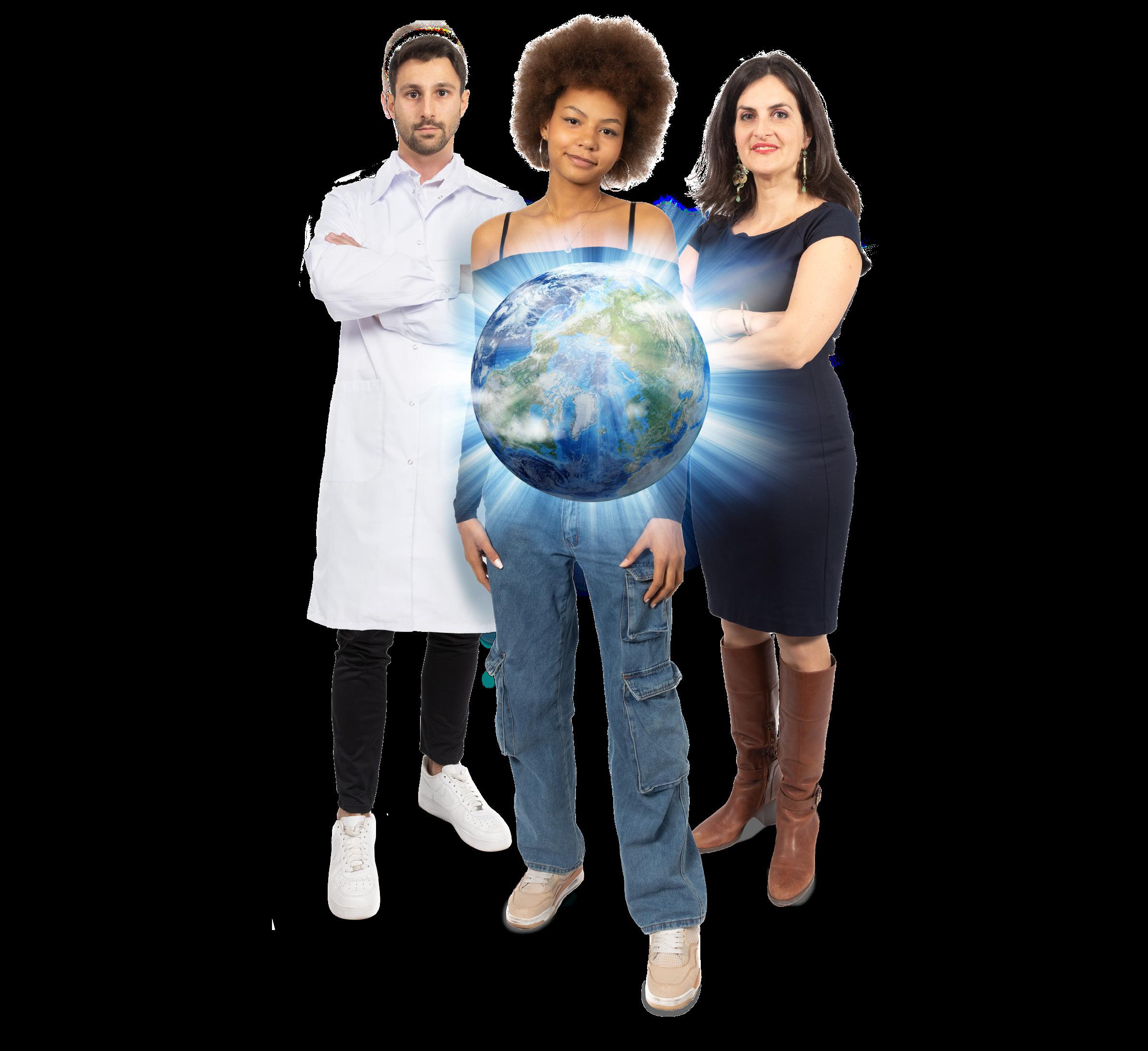
350,000 ALUMNI